- Family Vacation to India
- Flights from US to India
- Adventure Tour to India
- Tourist Attractions in India
- Behind the Scenes of a Hand-painted Map
- National Parks & Tiger Reserves in Rajasthan
- Embracing Eco Tourism in Rajasthan
- Golden Triangle Tour in India
- Best Time to Visit India
- Tiger Conservation in India
- Sariska and Ranthambore
- National Tiger Day in India
- The Glowing Eyes
- In the Wild Heart of Sariska: A Journey into the Unknown
- Hide and Seek with Hyena
- Rajmata of Sariska
- Sariska Tourism
- Shankar: The Ghost of the Boulders and a Testament to Resilience
- Tigers in Sariska
- Animals in Sariska National Park, Rajasthan
- Weekend Getaway from Gurgaon
- Trip to Sariska National Park
- An unforgettable wilderness walk among Sariska's leopards
- Weekend Getaways From Jaipur
- A Dawn with Leopards
- The Leopards of Sariska
- Wildlife Photography in Sariska
- The Role of Tehla in Sariska’s Conservation Legacy
- Places to Visit Sariska
- Sariska Tiger Reserve and National Park
- Sariska Safari
- Weekend Getaway From Delhi
- Vultures of Sariska
- Deciduous Jungle of Sariska
- Mythological Importance of Sariska
- Sariska Tiger Reserve
- Avifauna of Sariska, Around the Camp, and Nearby Wetlands
- Migratory Birds of Sariska
- Boulders of Tehla
- Camera Trap
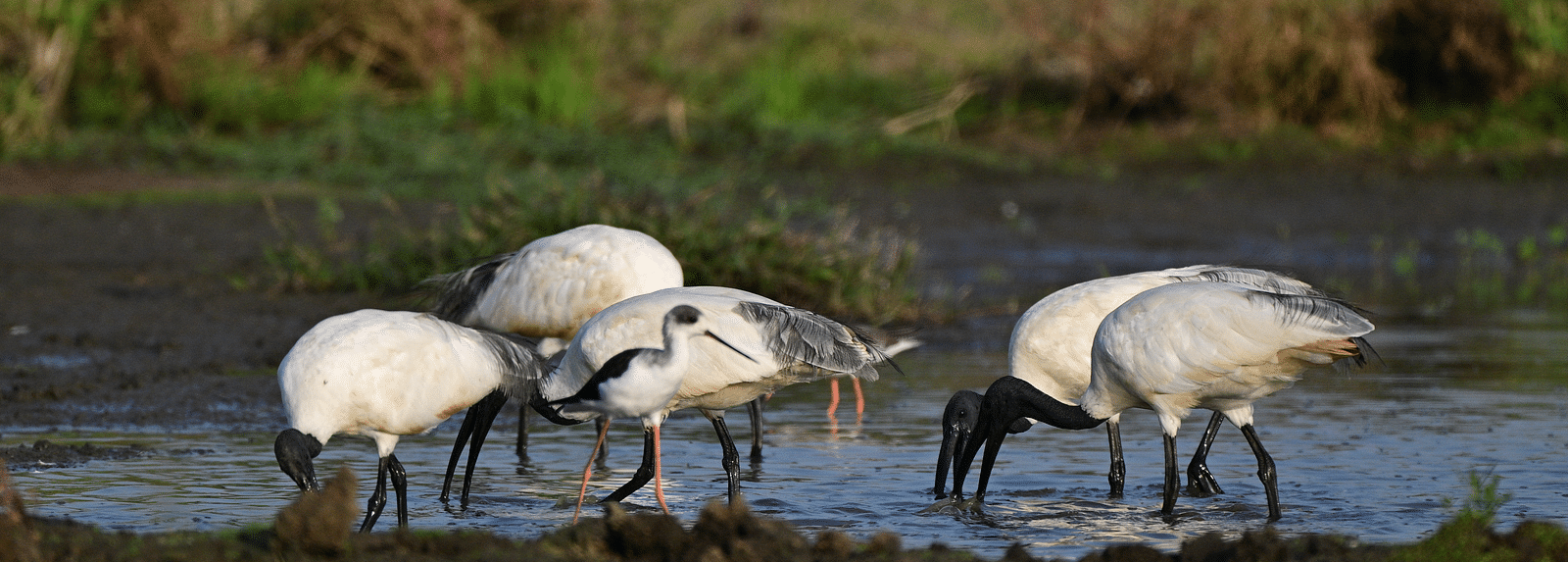
Avifauna of Utsav Camp Sariska, Around the Camp, and Nearby Wetlands
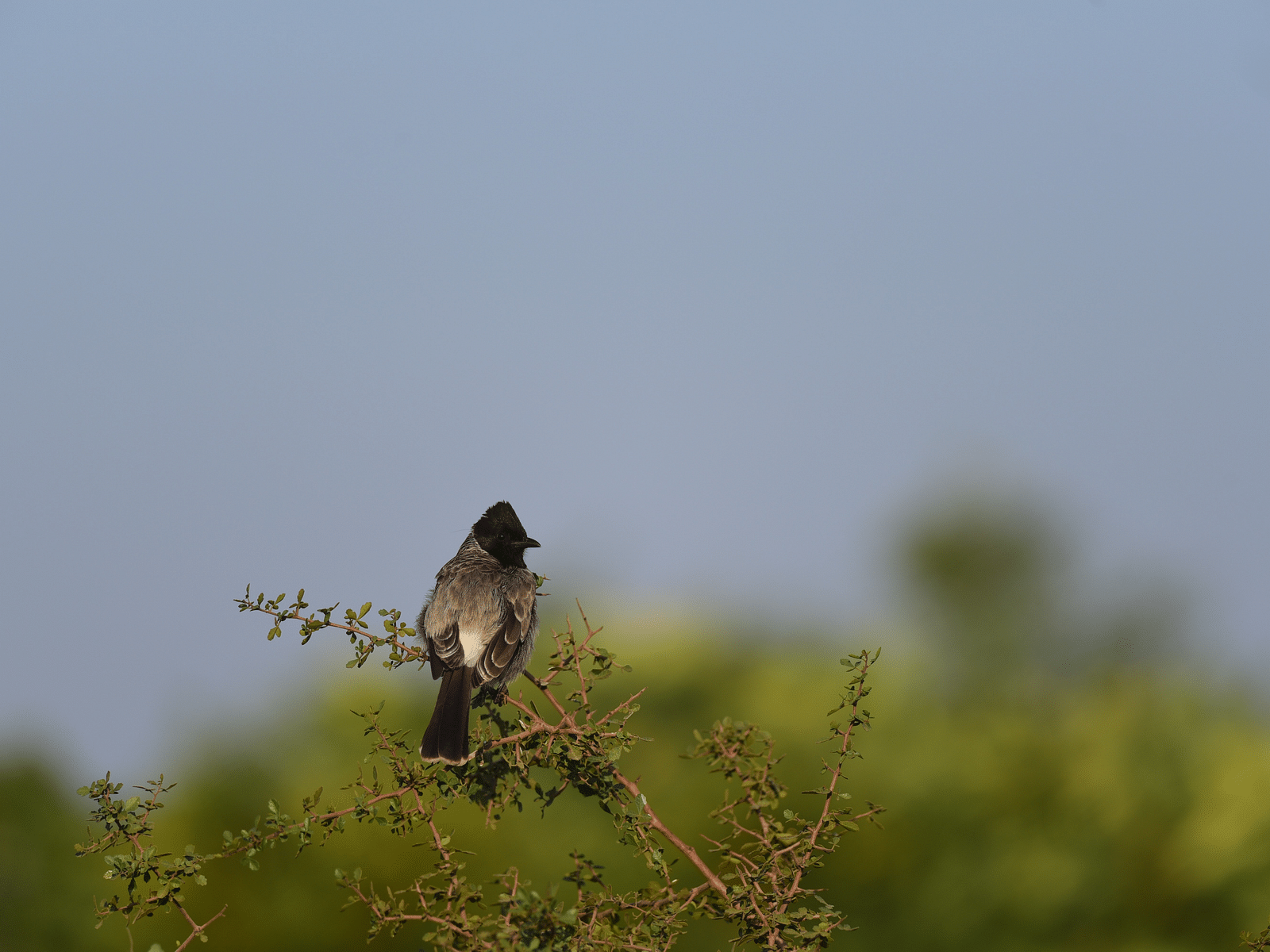
Red Vented Bulbul
A dark, sleek, medium-sized bird with a black crest and a white rump. The red colour under the tail is often difficult to see. Eats fruits, flower buds, and insects. Conspicuous and sometimes gregarious, often seen high in trees or perched on wires in urban and rural areas; generally, prefers scrubby edge habitat instead of dense forest. Its calls include a variety of chirps and whistles.
Indian Robin
A nondescript robin males are primarily black with chestnut bottom feathers, although males in the northern population have brownish upperparts. Males also have a white shoulder patch and a relatively long tail. Females have completely brown upper parts, lack the male’s white shoulder patch, and have greyish-brown underparts. They are generally seen in pairs, foraging on the ground with the tail cocked up. Found in open country, at forest edges, around human habitation, and in scrub lands.

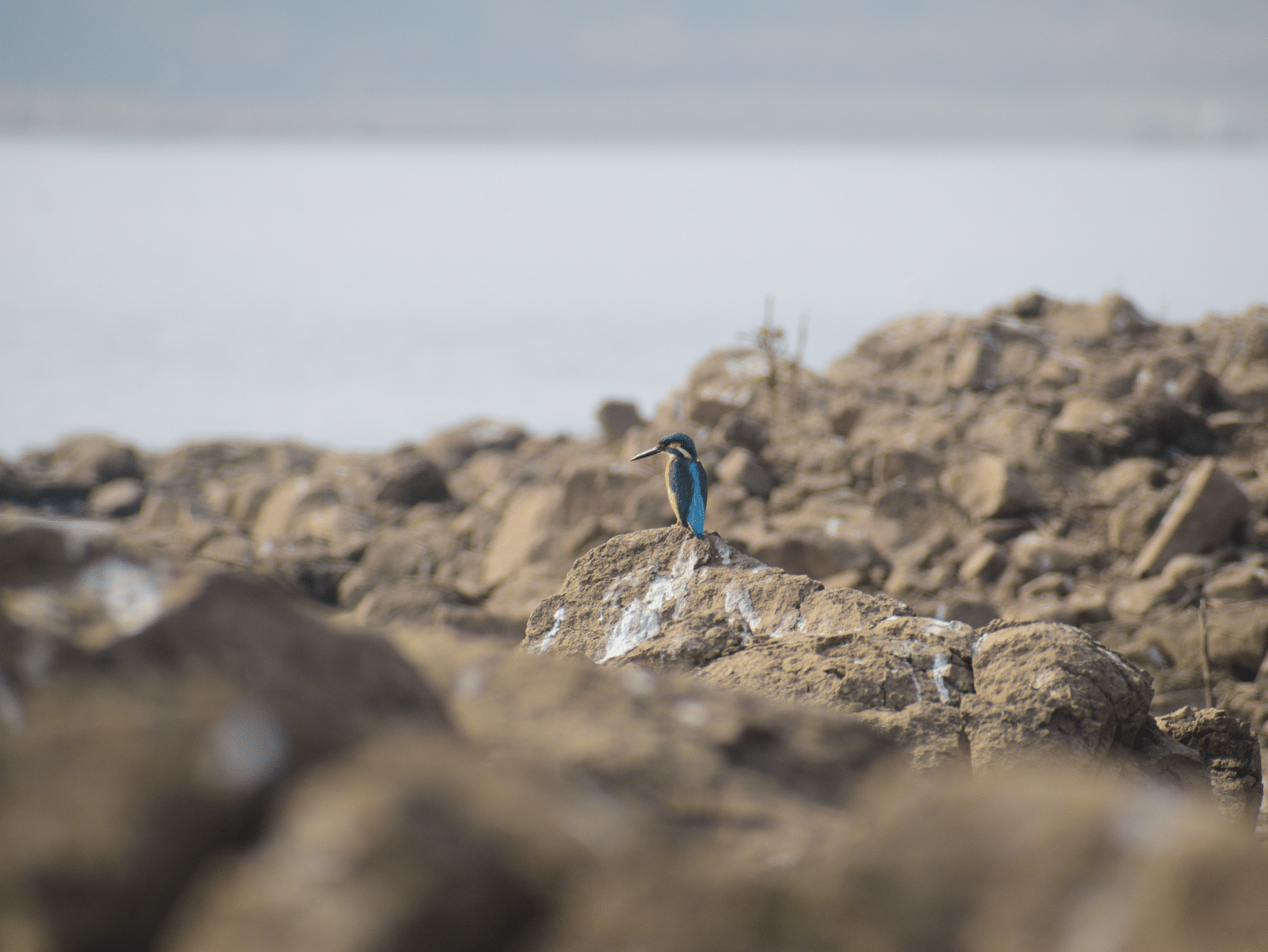
Common Kingfisher
Fairly common but small, often rather shy, and inconspicuous. Beautiful blue-and-orange plumage, in combination with habitat and habits, is basically unmistakable. Found along rivers, streams, lakes, and ponds — almost any fresh or brackish habitat with small fish. Often perches quietly in trees over water; most often seen in very fast low flight as a turquoise flash over the water, usually flying away. Easily detected once its high, shrill whistled call is learned, even if the bird itself is hidden.Sarus Crane
Tall pale grey crane with pink legs and red bare skin on the head extending down the neck. Juvenile facial colouring is less prominent. Typically they are found in shallow wetlands or in cropped agricultural areas. In Australia, take care to identify from Brolga, which has black legs and a grey upper neck. Listen for its loud, far-carrying bugling calls.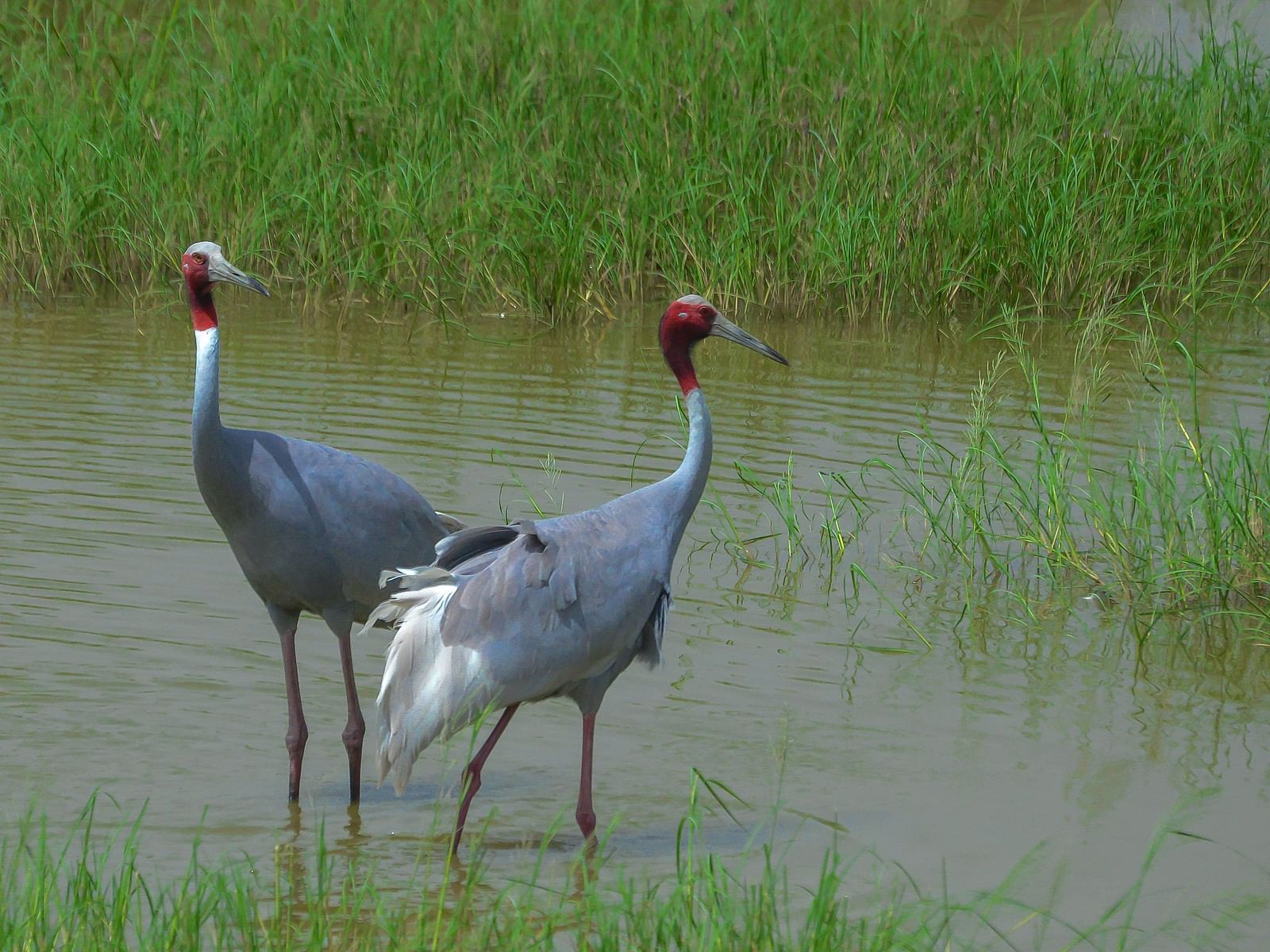
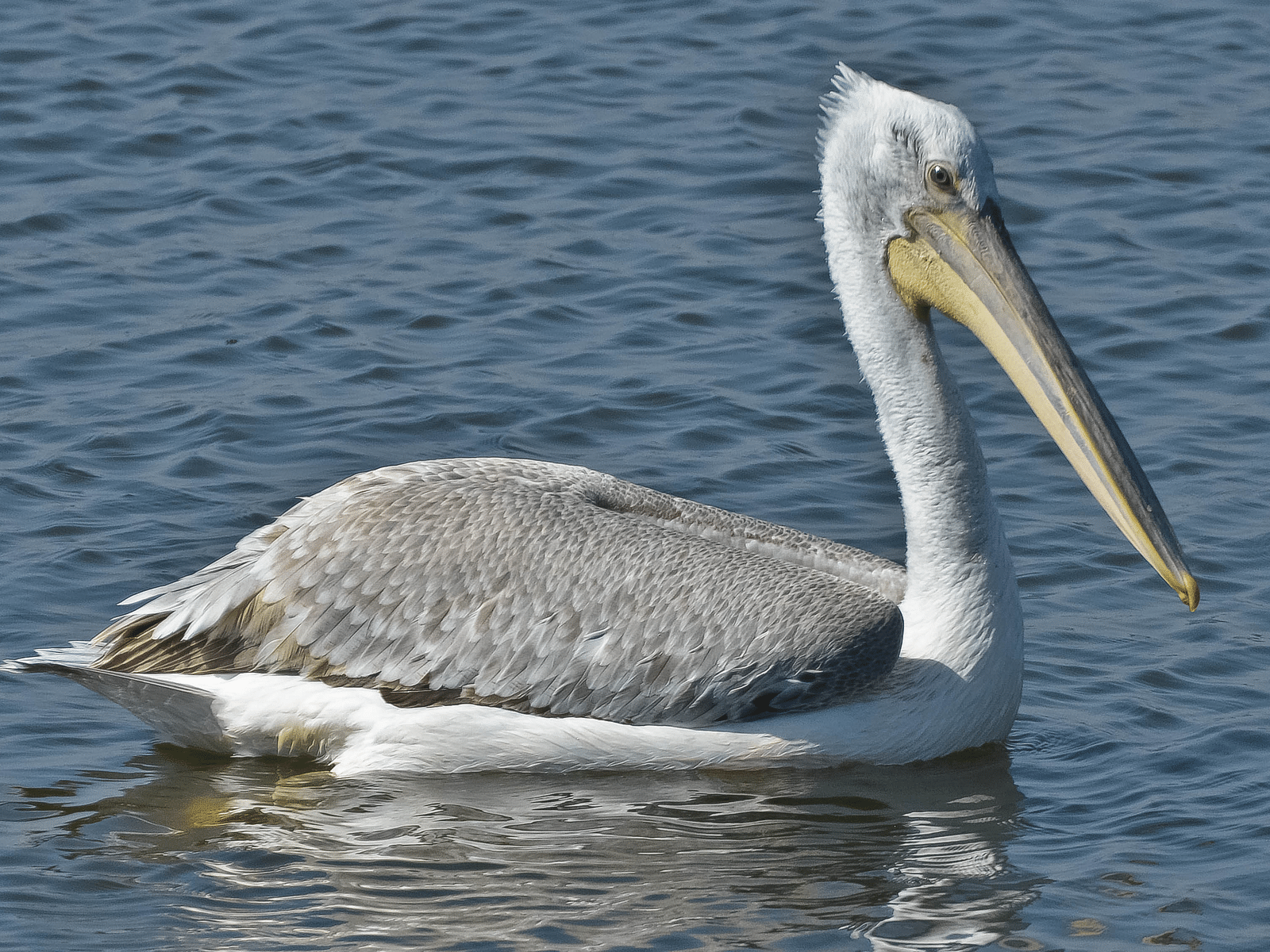
Great White Pelican
A large white waterbird with a hefty bill and a yellow-orange throat pouch. Note the pink bare skin around the eye that extends towards the bill. Young birds have browner overall plumage relative to adults with brown upper wings and a brown head and the legs are pink. In flight, they show dark flight feathers which contrast with the rest of the wing. Often seen fishing cooperatively, swimming in a wide arc to round up the fish and then scoop them into their pouch.Painted Stork
A large stork with a long yellow bill that curves down at the tip, like that of an Ibis. The adult is primarily white with black striped markings on the wings and bright pink on tertials. Also note the bright orange face, pinkish legs, and speckled band across the chest. Immatures are duller, with a brown wash, and lack the chest band. These storks typically fly with their head and neck drooping almost at or below the belly level. Often seen near water bodies such as wetlands, marshes, and flooded agricultural fields. Breeds in crowded colonies, often with other waterbirds.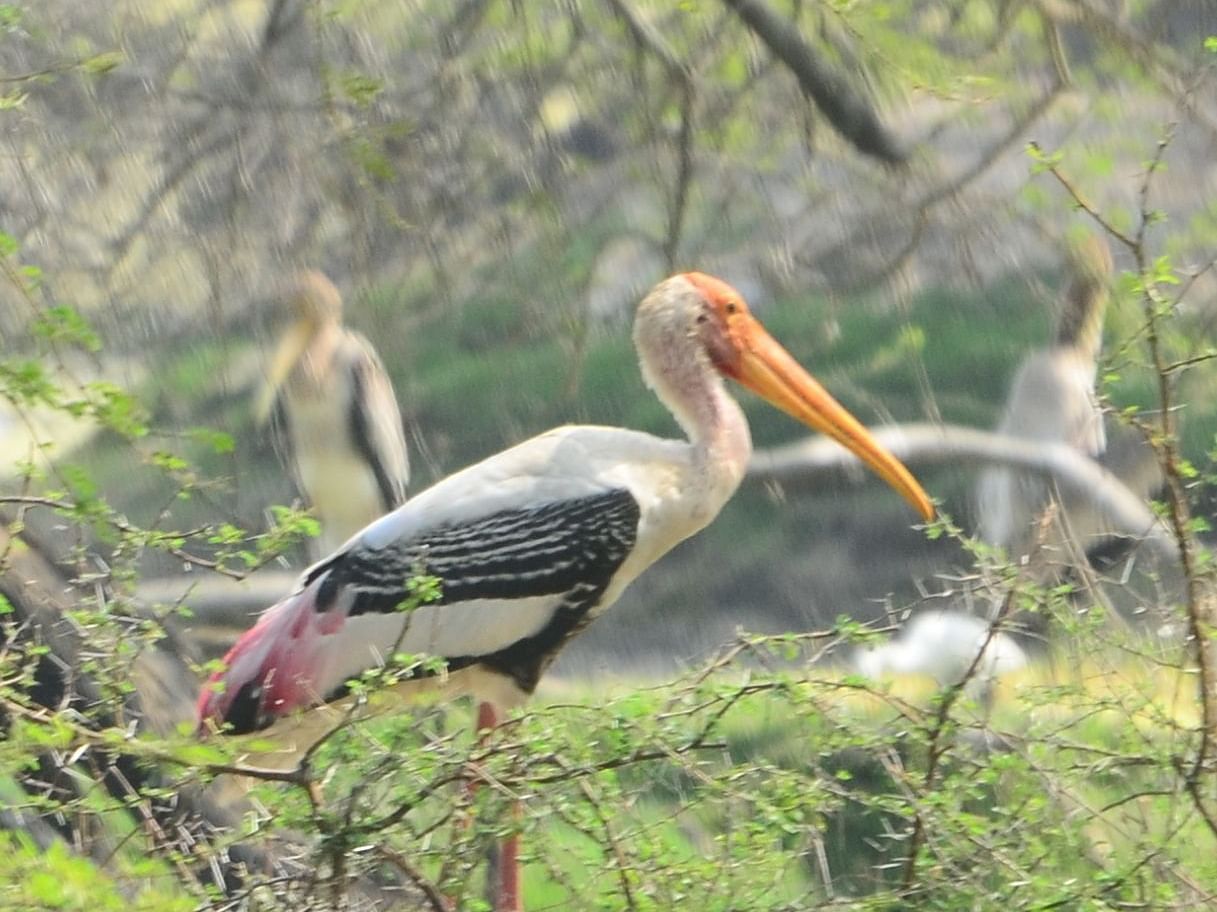
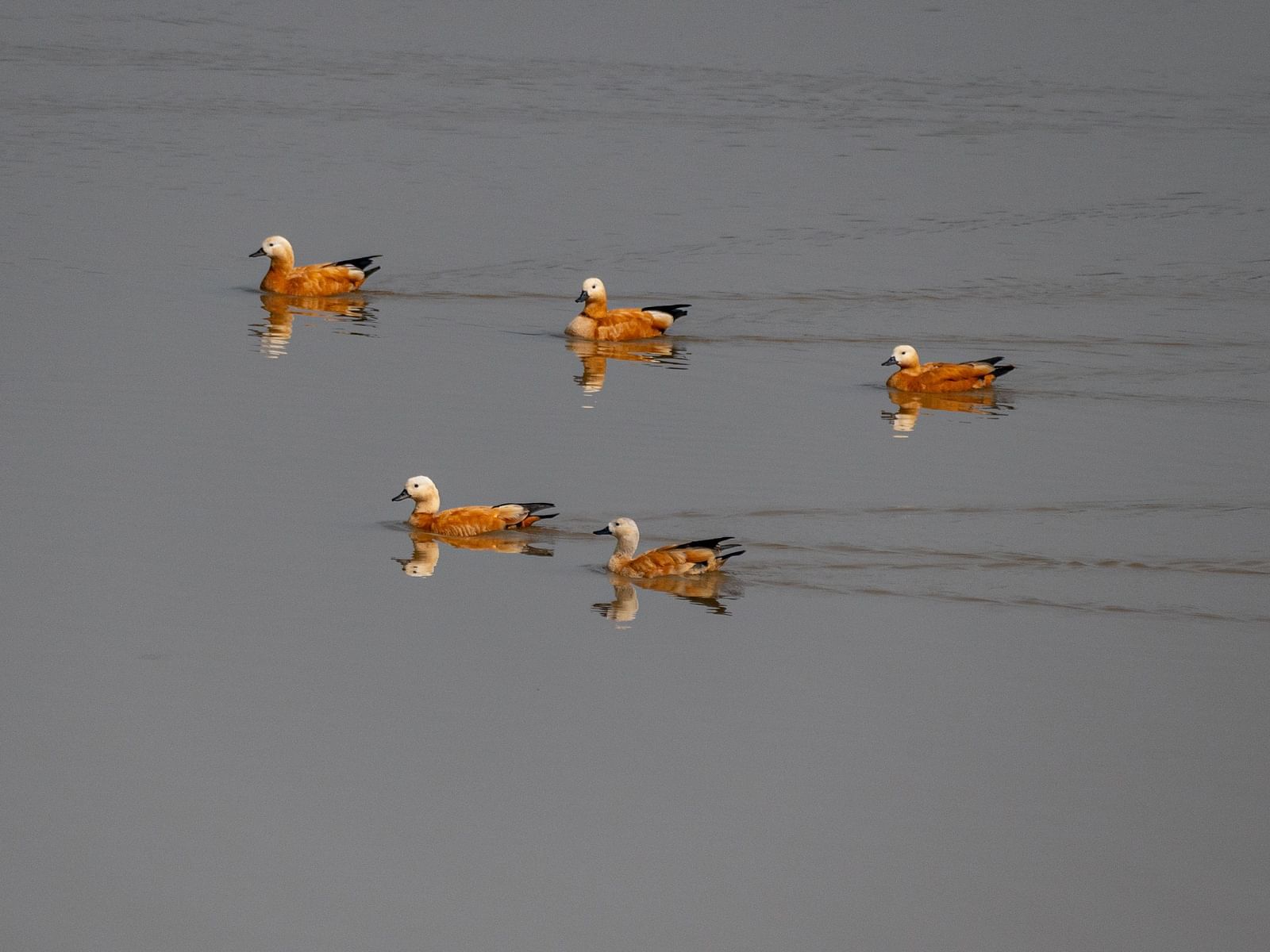
Ruddy Shelduck
Striking and distinctive goose-like duck. The plumage is bright and ruddy overall with a contrasting pale creamy head and neck, the male has a narrow black neck ring. Big white fore-wing patches striking in flight. Breeds in south-eastern Europe and Central Asia, winters in South Asia. Often found around saline lakes; also, reservoirs and agricultural fields. Escapees from waterfowl collections are occasionally seen free-flying outside of the native range.Common Teal
Tiny duck with a petite, thin bill. Males have a brown head with a wide green swatch behind the eye, creamy speckled breast, and mostly grey body. Females are brown, darker overall than other dabbling ducks. Forages by dabbling and tipping up to reach submerged aquatic vegetation. Also regularly walks around mudflats to feed.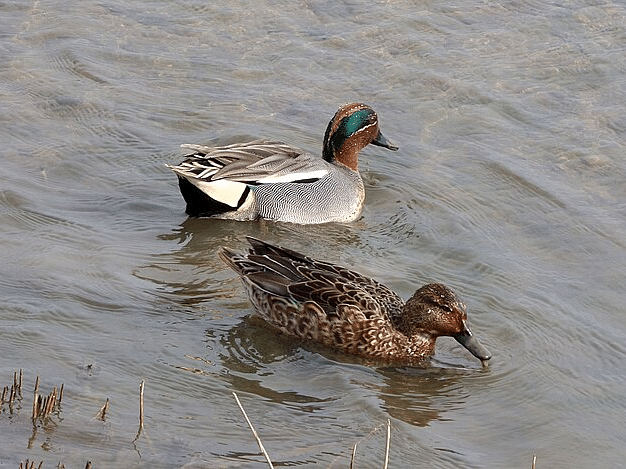
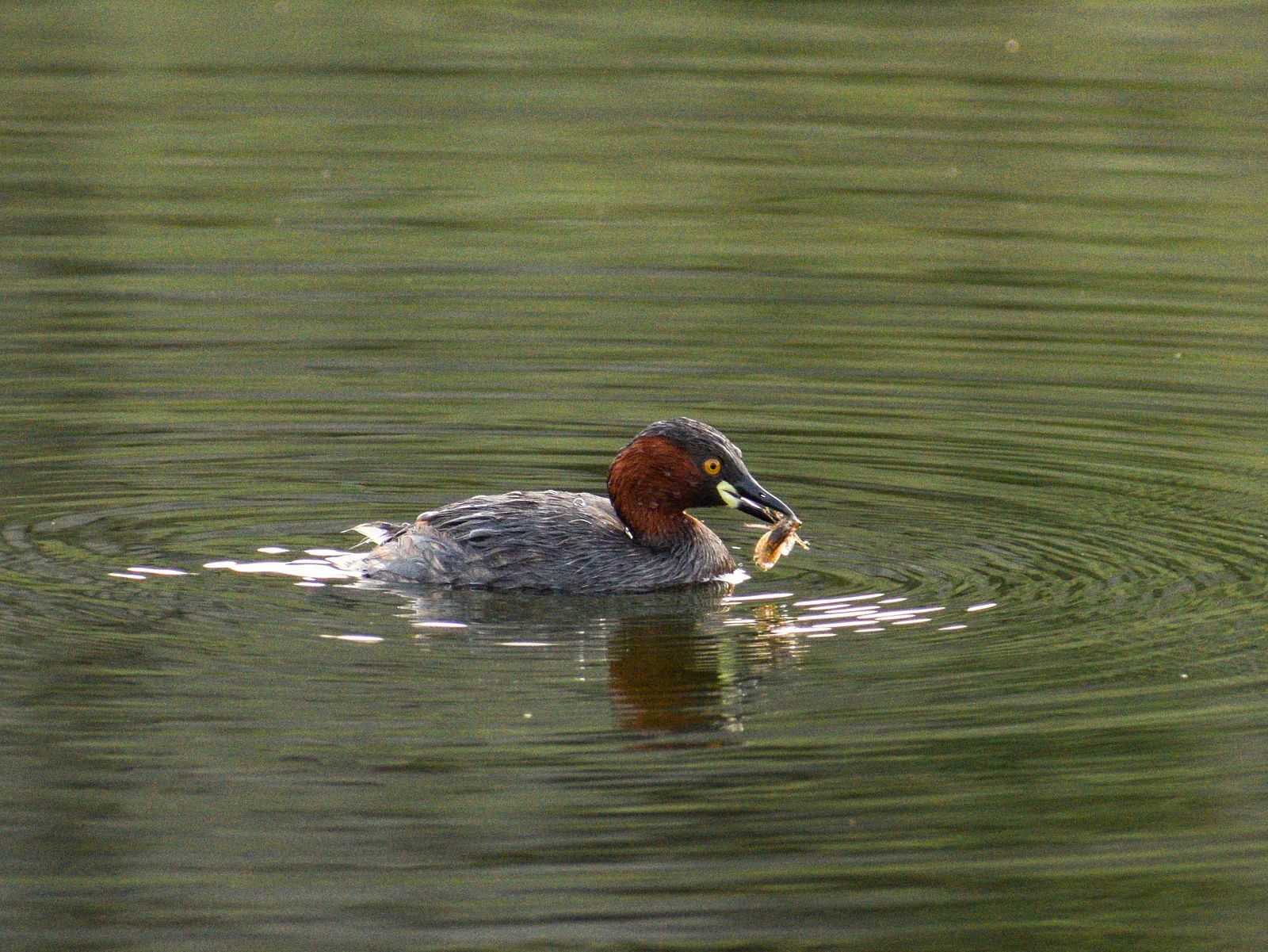
Little Grebe
Fairly common but often inconspicuous small diving birds of wetlands with bordering reeds and other vegetation. Often remains out of sight; less often out on open water (mainly in winter). It is rather compact, with a rounded head, and a puffy rear end. Seen mainly as singles and small loose flocks, often sleeping during the day. Breeding plumage often looks dark overall; in good light note dark rusty head and neck sides with a yellow patch at the base of the bill. Nonbreeding plumage dingy pale brownish overall with a dark cap.White-breasted Waterhen
Medium-sized, fairly common chicken-like marsh bird found in meadows, ditches, riversides, marshes, as well as parks and farmlands near humans; often seen foraging in the open. Adults are dark slaty above and white below, with a rusty patch under the tail. Juveniles are similar but duller in colour. They make remarkably variable songs, a series of hooting, grunting, or rasping notes or phrases, repeated monotonously, often from an exposed perch.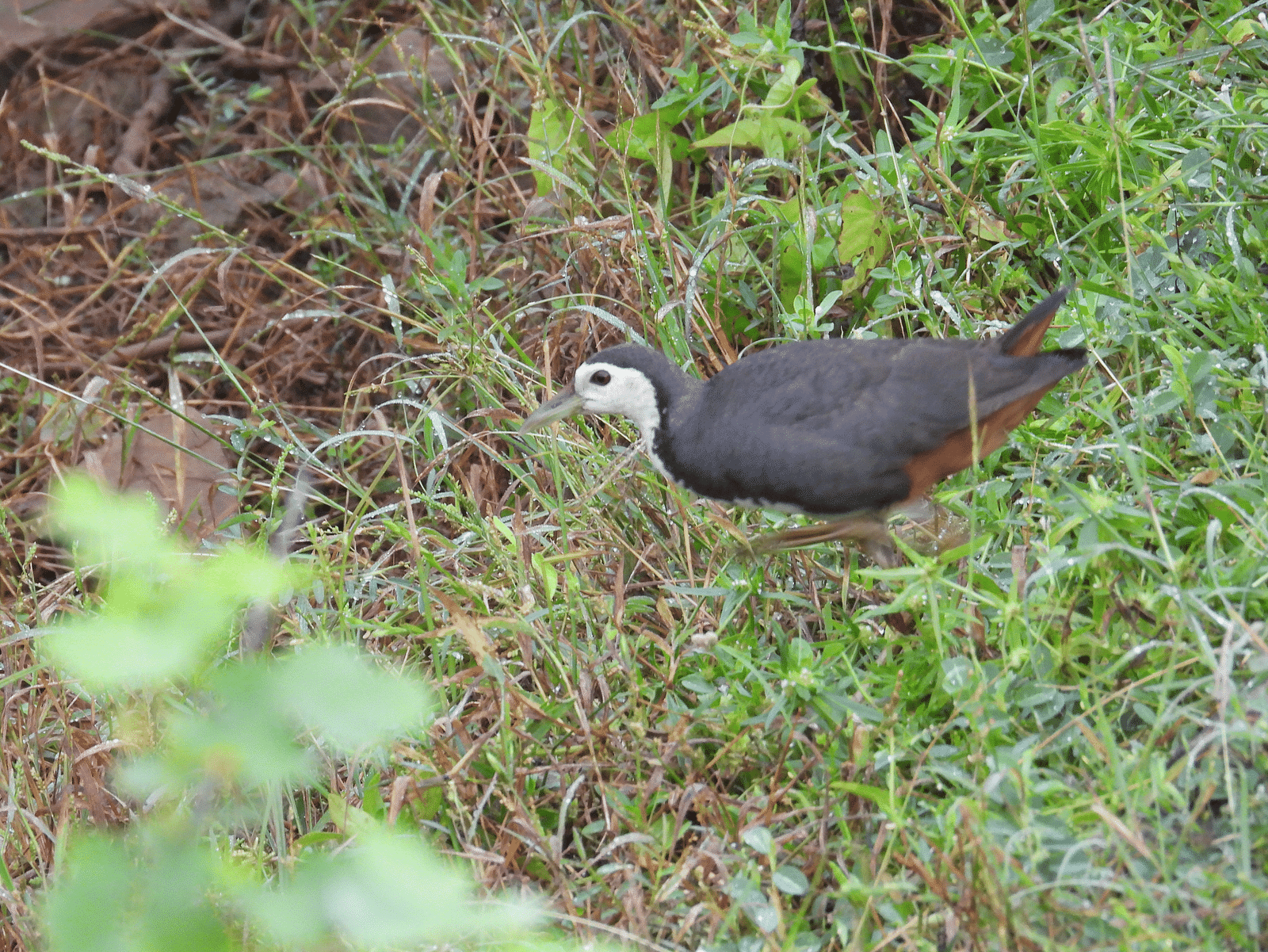
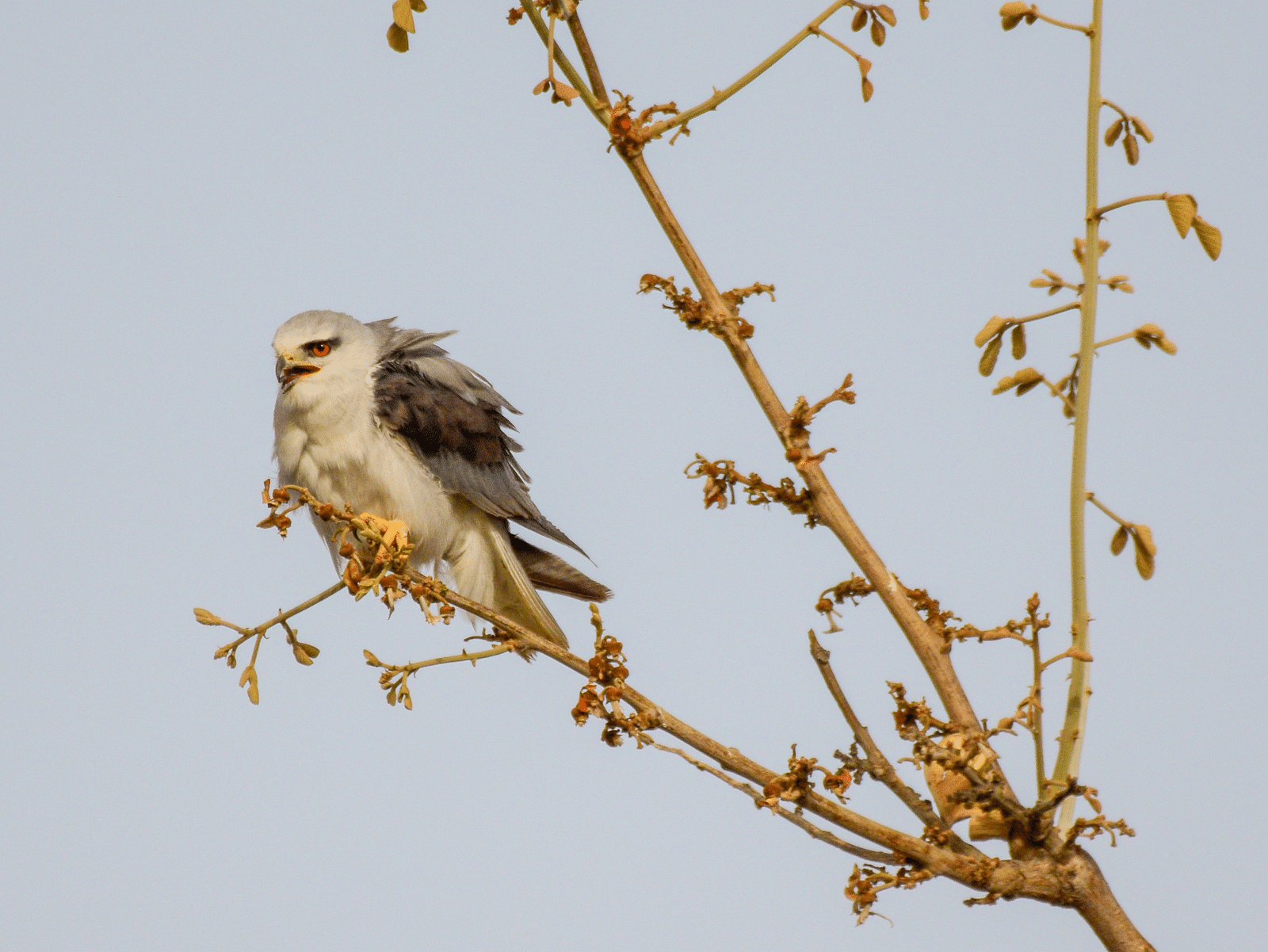
Black-winged Kite
Small and distinctive falcon-like kite. Light underneath, blue-grey above with conspicuous black shoulders formed by black wing coverts. Juveniles have a scaly back and brownish-washed breast. Found in open savannah, semi-desert, and agricultural lands with scattered woods; frequently seen on exposed perches. Varied flight style, hovering like a kestrel or gliding like a harrier with deep wingbeats and raised wings.Little Egret
Small snow-white heron with slender dark bill, blackish legs, and yellowish feet (or 'golden slippers'). Breeding adult has 2 long wispy head plumes and a spray of white plumes ('aigrettes') on the lower back. Fairly common in a wide variety of wetlands, at lakes, along rivers, and in estuaries—almost anywhere with small fish. Occurs as singles or small loose groups; nests and roosts communally.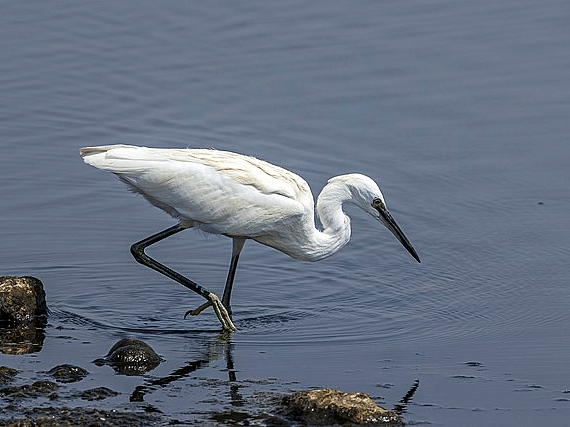
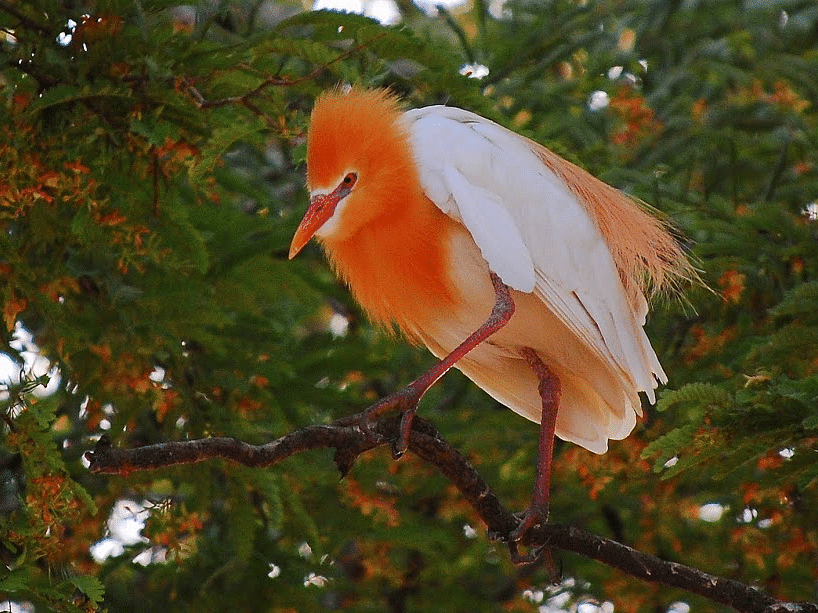
Cattle Egret
Small, compact white heron with a relatively short yellow bill. More frequently seen in dry habitats than other egrets; rarely gets its feet wet. In breeding season, look for pale salmon colour on the head and breast (more extensive in Asia and Australasia) and a brighter bill. Leg colour varies from reddish or yellow during the breeding season to black during the non-breeding season. Juveniles have dark bills. Always note the relatively short, thick neck and short legs compared with other egrets. Widespread and fairly common across the globe. Often gathers in flocks, frequently following cattle or tractors in fields.Great Egret
Large, lanky, long-necked white heron. Size and black legs help separate from other egrets. Widespread and fairly common across the globe. Bill colour varies across range: always yellow in the Americas, black in breeding season elsewhere. Occurs in any shallow wetland, including ponds, marshes, and tidal mudflats. Slowly stalks prey in shallow water. Often seen singly, but sometimes gathers in large numbers where food is plentiful. Breeds in colonies, frequently mixed with other egrets and herons.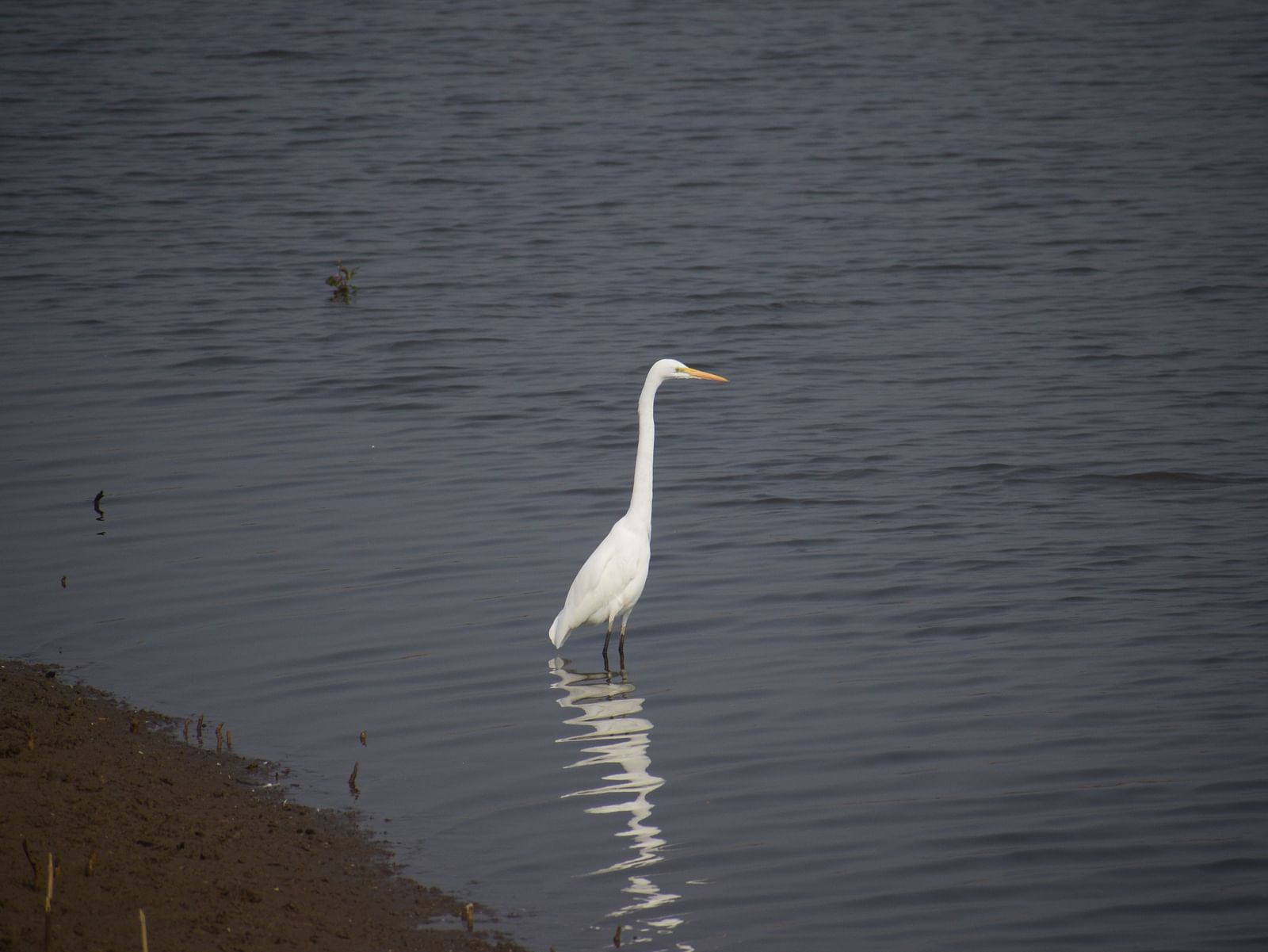
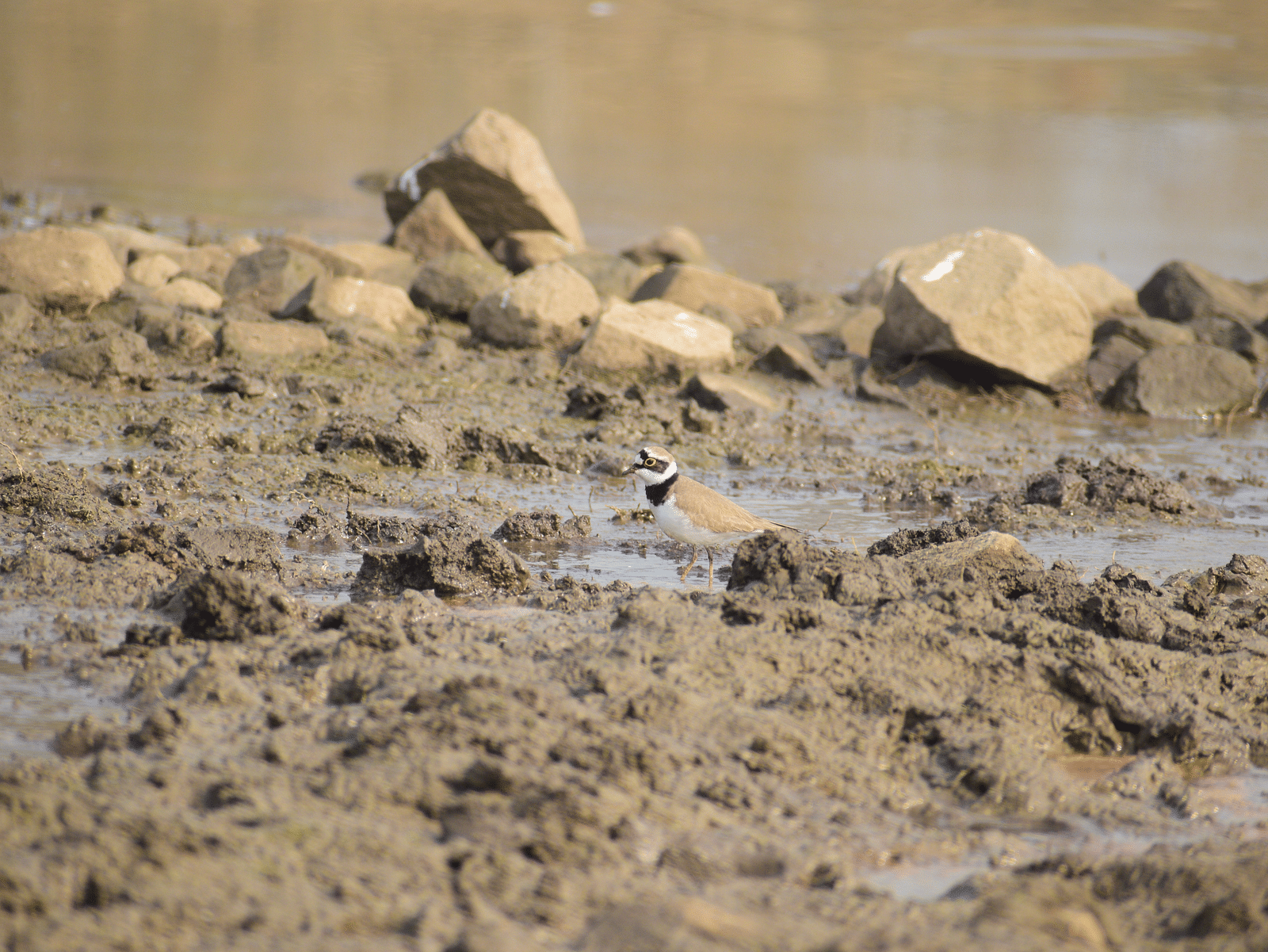
Little Ringed Plover
Delicately built small plover with bright yellow eye rings. Note dull pinkish legs and large white forehead patch (in adults). Plumage much like bulkier Ringed Plover, but white eyebrow continues unbroken across the forehead. In flight, it shows a narrow, indistinct whitish wing stripe. Breeds on stony substrates around lakes, gravel pits, and along rivers; migrants occur in a wide variety of fresh and brackish wetland habitats, but rarely out on open tidal areas.Eurasian Spoonbill
Distinctive, large white wading bird with a spatula for a bill. The adult has a short crest and a yellowish breast patch. The first year has a paler bill, with fine black wingtips visible in flight. Sleeping birds have horizontal posture and bulging neck, vs. more vertical stance of egrets. Found in wetlands with shallow water (including tidal flats), it feeds by sweeping its bill side-to-side for crustaceans and small fish. May be confused with egrets when sleeping, but note stockier, more thickset overall appearance.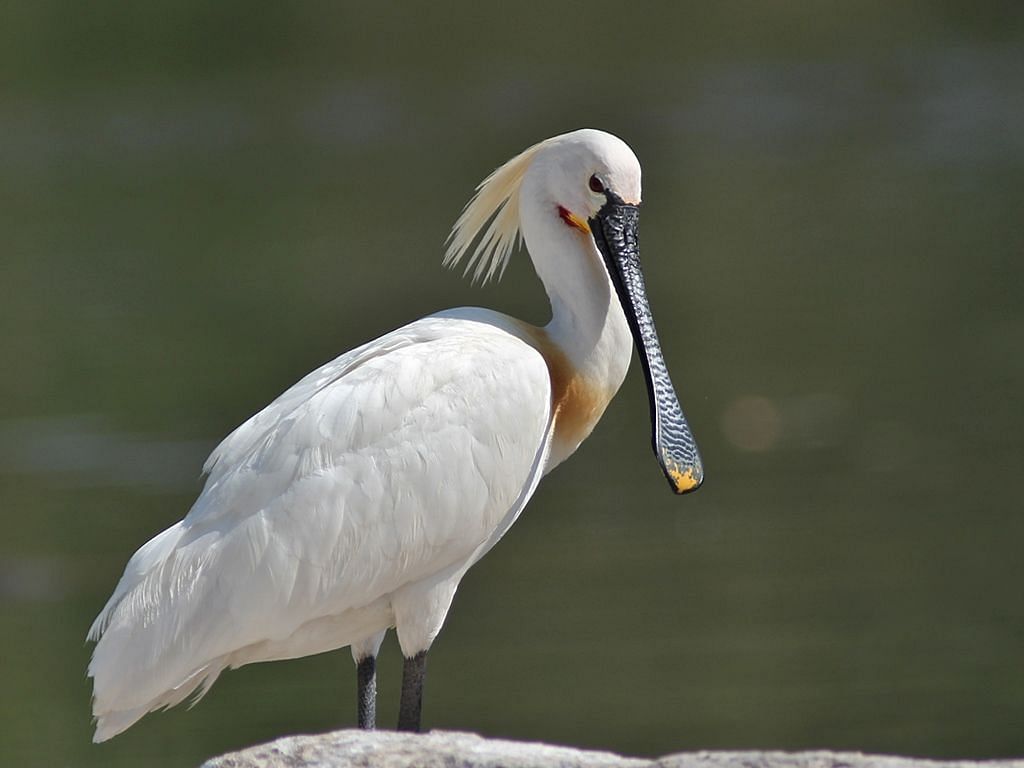
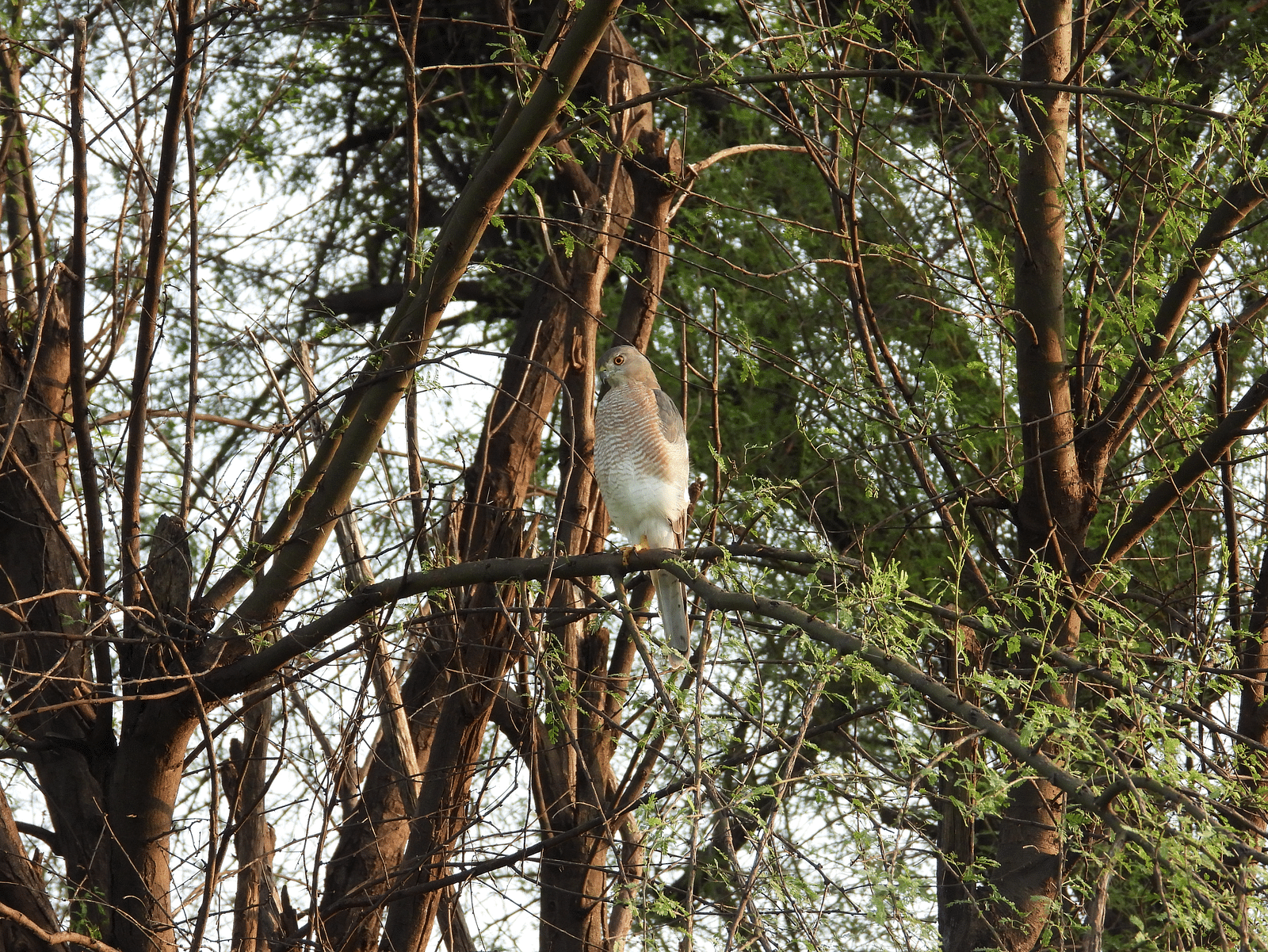
Shikra
A common, widespread resident across Asia and Africa. Adult males have a reddish iris, blue-grey upperparts and fine brownish-orange barring on underparts. Females have a yellowish iris and brownish grey upperparts. Both have narrow dark barring on the tail. Juveniles are browner with a prominent moustache stripe and streaked underparts. It hunts for a wide variety of prey in woodland, savannah, and even suburban gardens, dashing out from perches within vegetation to grab its prey.Indian Vulture
A light brown, medium-sized vulture. It has whitish feathers on a dark head and neck, a pale bill, and a pale collar which is more prominent behind the neck. The juvenile has a dark bill, more white feathering on the head and neck, and browner plumage overall, with pale streaks on the breast and belly. In flight, note the pale underparts and underwing contrasting with the dark flight feathers. The species nests in colonies on cliffs and ruins, and occasionally in trees.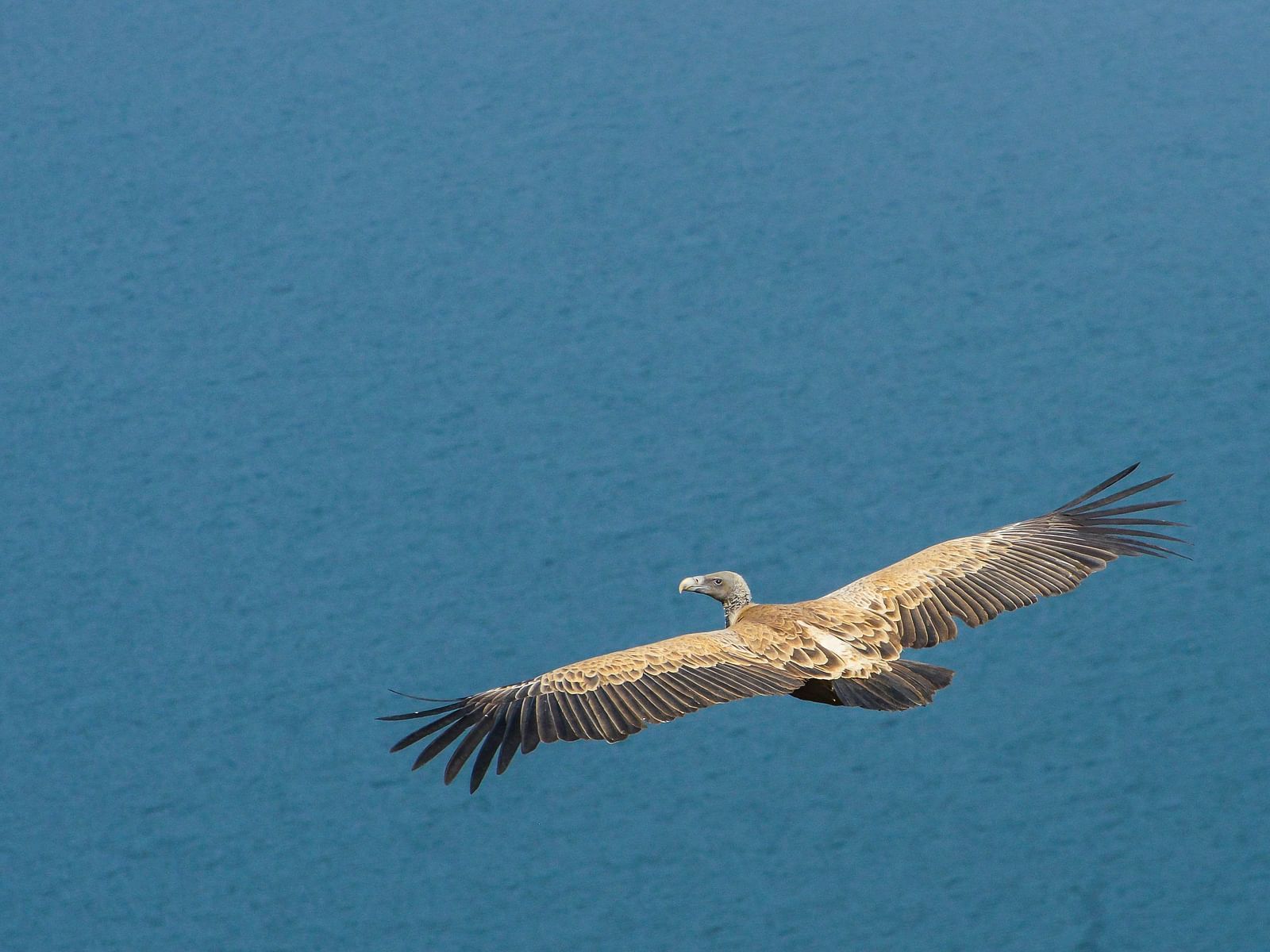
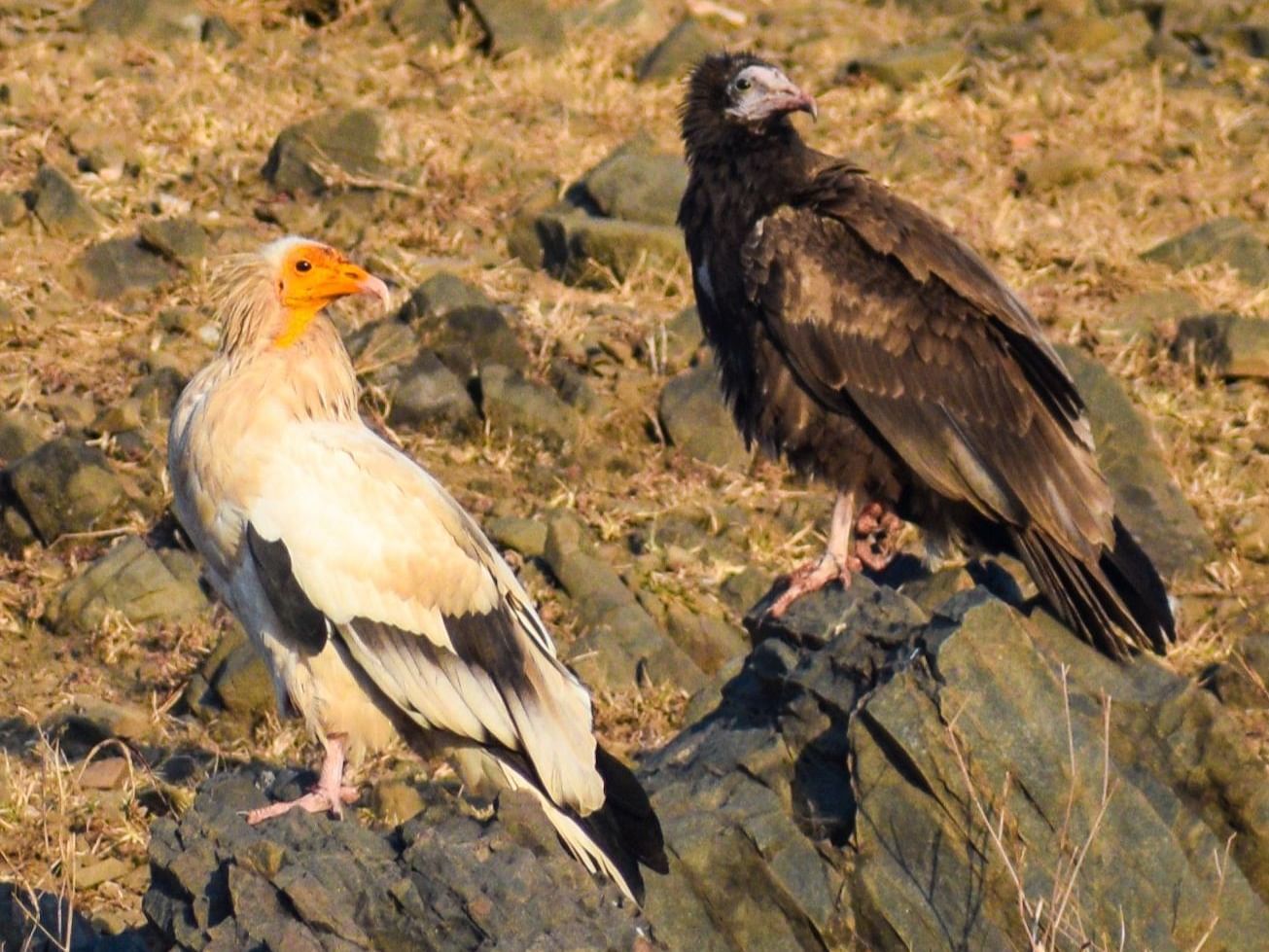
Egyptian Vulture
Odd-looking, pale, medium-sized vulture with a bare, solemn-looking yellow face. The bill is narrow with a black tip. In flight, the deep-fingered black flight feathers contrasting with white inner feathers may recall a White Stork, but the tail is wedge-shaped. Juveniles are dirty brown with bare grey faces. An inhabitant of open or semi-open areas, nesting on cliffs and less frequently in trees. Scavenges at rubbish dumps in addition to carcasses, but sadly is in decline over much of its wide range.Eurasian Hoopoe
Utterly unmistakable orange bird with zebra-striped wings, a Chinese fan of a crest (usually held closed, but often raised just after landing), and a rapier of a bill. Favours semi-open habitats such as heathland, farmland, orchards, and grassy lawns, where it feeds on the ground, probing with its long bill for insects. Flight fast and fairly direct, with rather deep wingbeats. Unlikely to be confused, but flight pattern and round wings may loosely resemble that of woodpeckers; note far longer and thinner bill.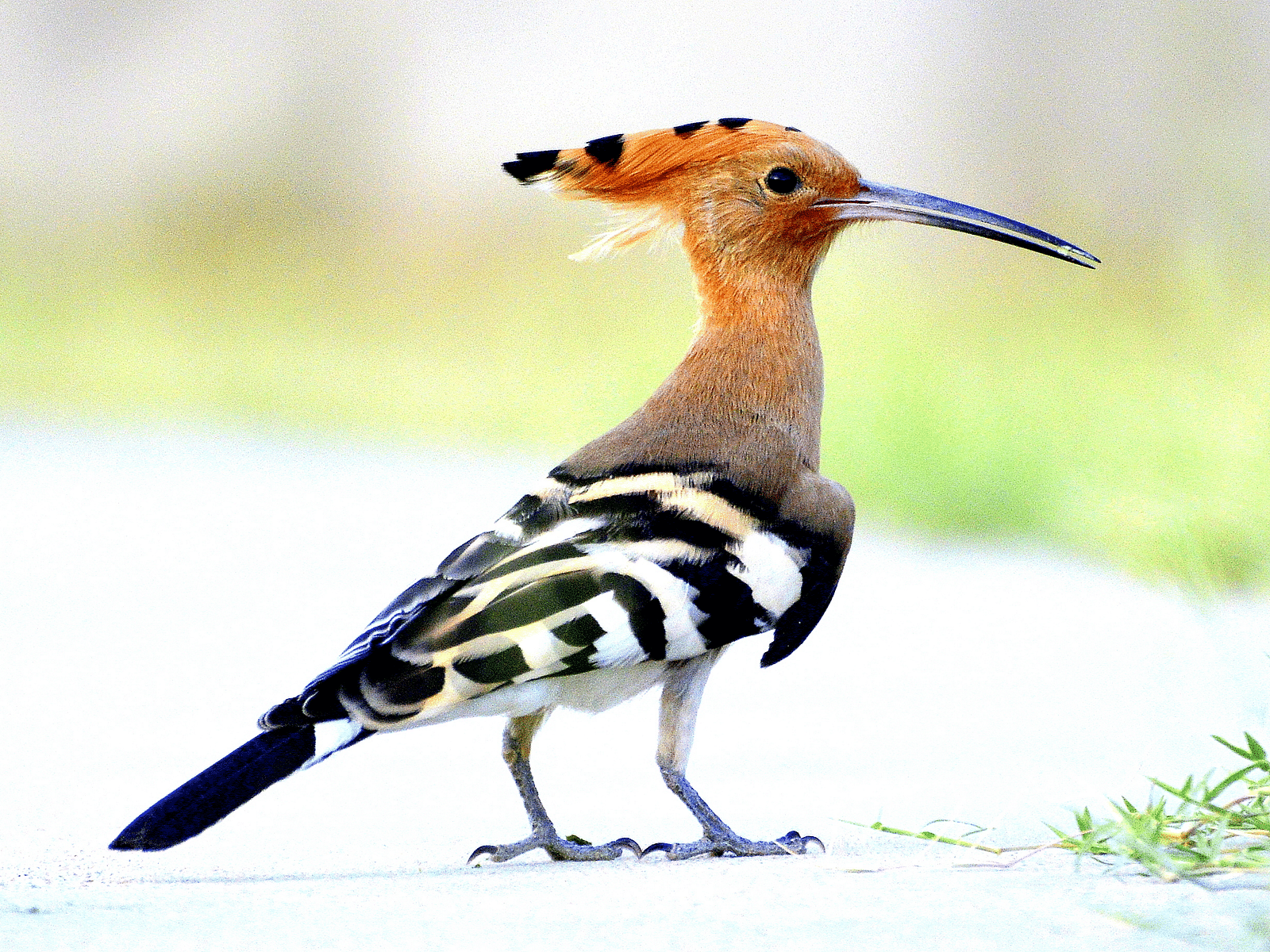
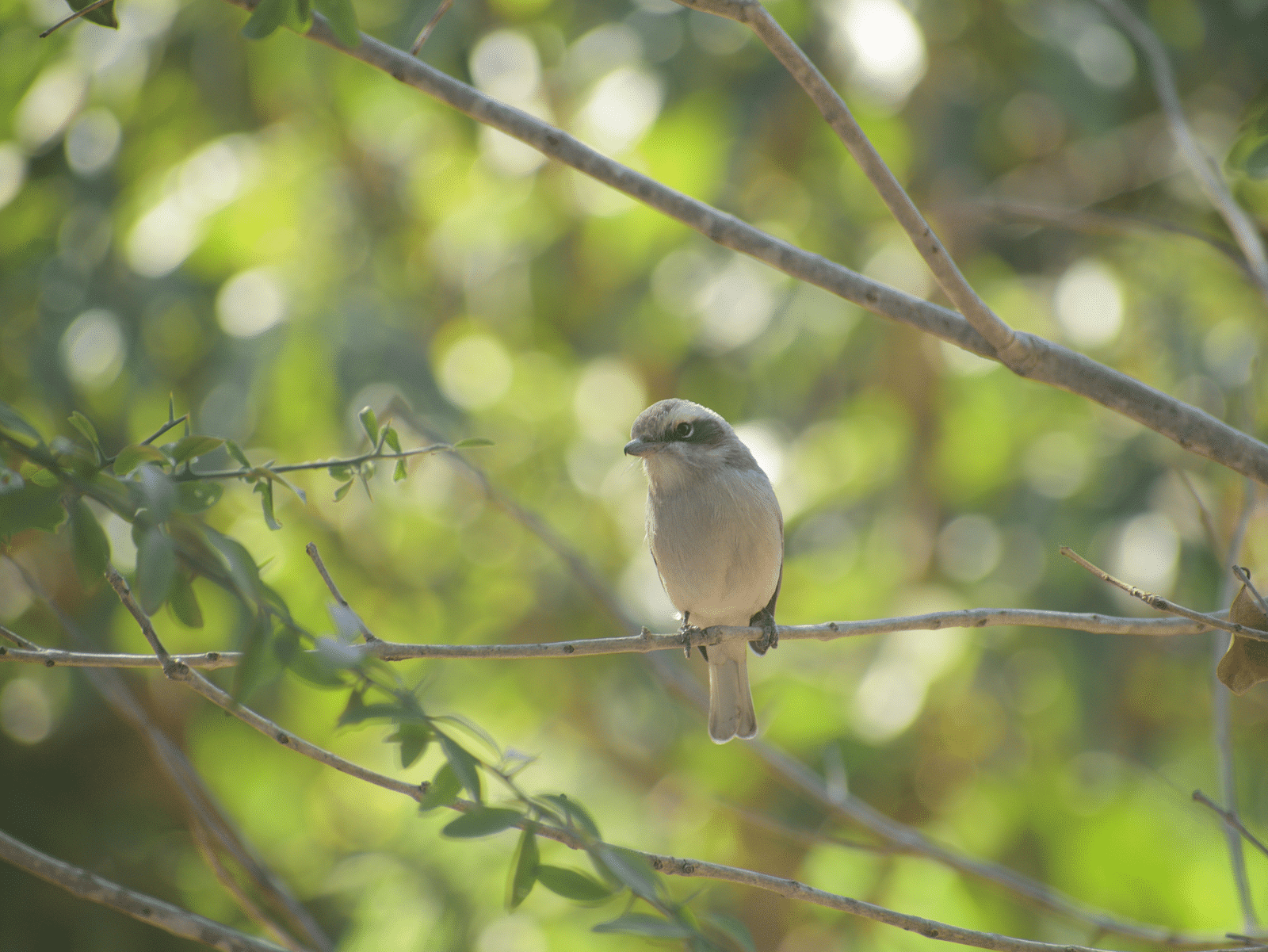
Common Wood Shrike
A medium-sized wood shrike with greyish-brown upperparts, black facial mask, white rump, and grey tail with white outer tail feathers. Bill was strongly hooked, dark greyish-brown in colour. Underparts white. Similar to Malabar Woodshrike and Large Woodshrike, but generally found in drier forests; also note prominent white supercilium. Usually found in dry forested areas and shrublands. The bright, fast-paced song starts out with two strident 'white' notes, followed by a descending series of shorter notes. Calls vary but usually sound like isolated fragments of song.Greater Flame Back Woodpecker
Common, four-toed, large-billed, golden-backed woodpecker found in wet tropical and subtropical forests across South and Southeast Asia. Separated from the group of 'small-billed' flame backs by a much larger bill, a mottled black-and-white nape instead of a black nape, and a divided black horizontal stripe below the cheek. Separated from the similarly large-billed White-naped Woodpecker by a red rump, the lack of a clean white nape, and a preference for wetter habitat. Greater Flame back is a loose participant in mixed-species foraging flocks, often detected by its loud, high-pitched trill similar to that of Common Flame back.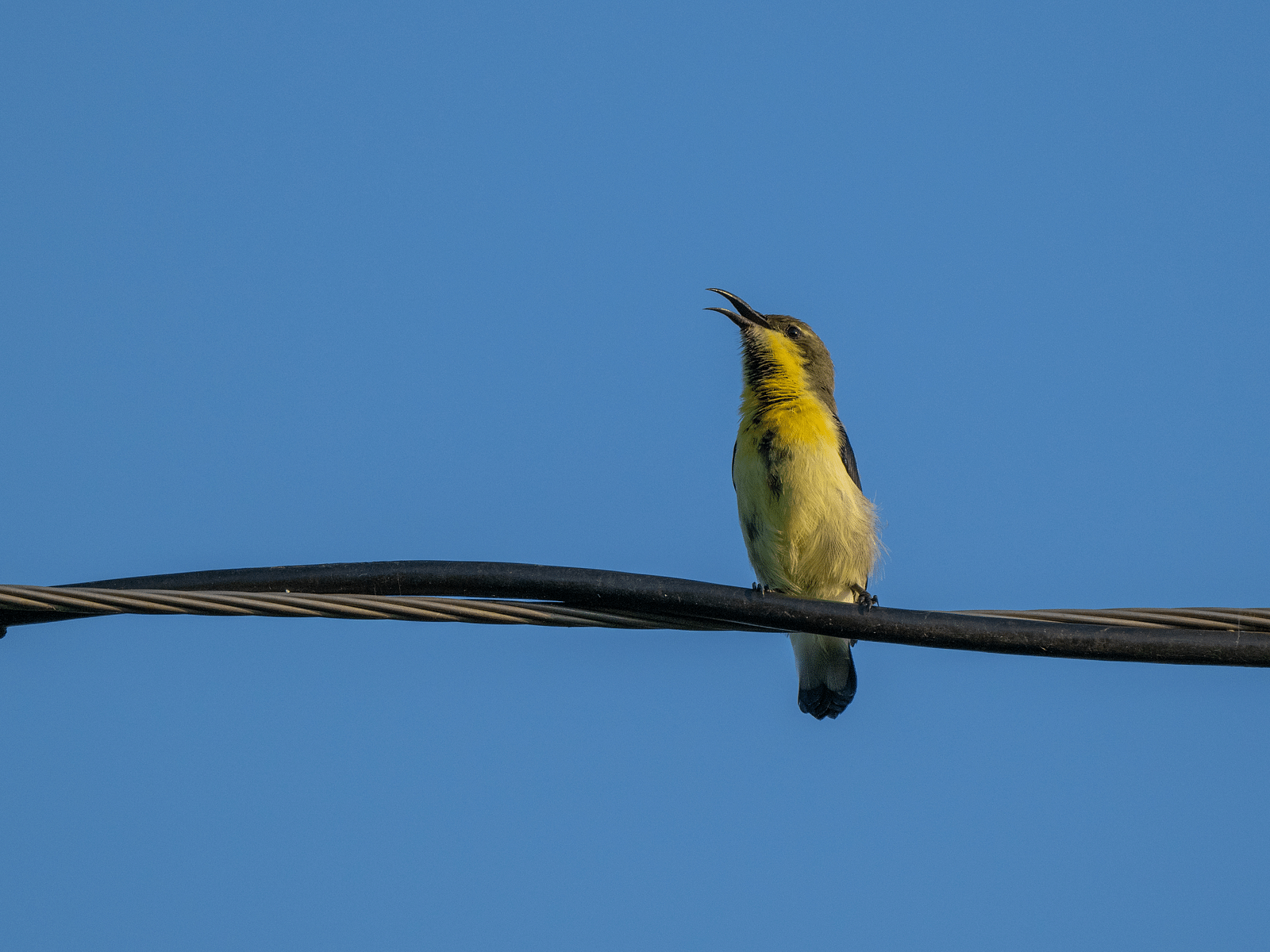
Oriental Magpie Robin
A medium-sized robin with a broad white wing bar running from the shoulder to the tip of the wing. Note white outer tail feathers, particularly when in flight. Males sport black-and-white plumage while the females are greyish-brown and white. Juveniles resemble females but have a scaly head and upperparts. They have a good repertoire of melodious calls and are known to imitate other bird calls. The most commonly heard call is a whistle given at dawn. Most often seen singing from a high exposed perch. These birds are often seen in cultivated areas, open woodlands, and gardens.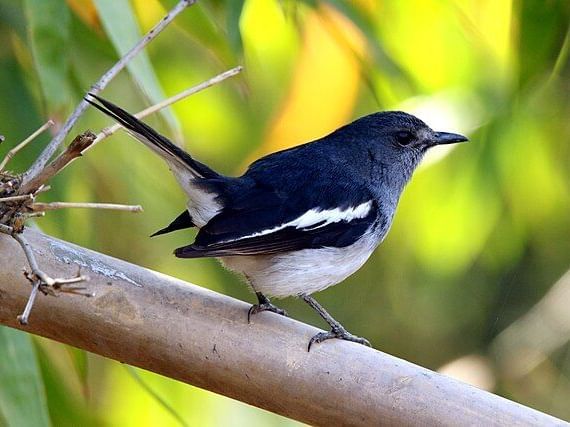
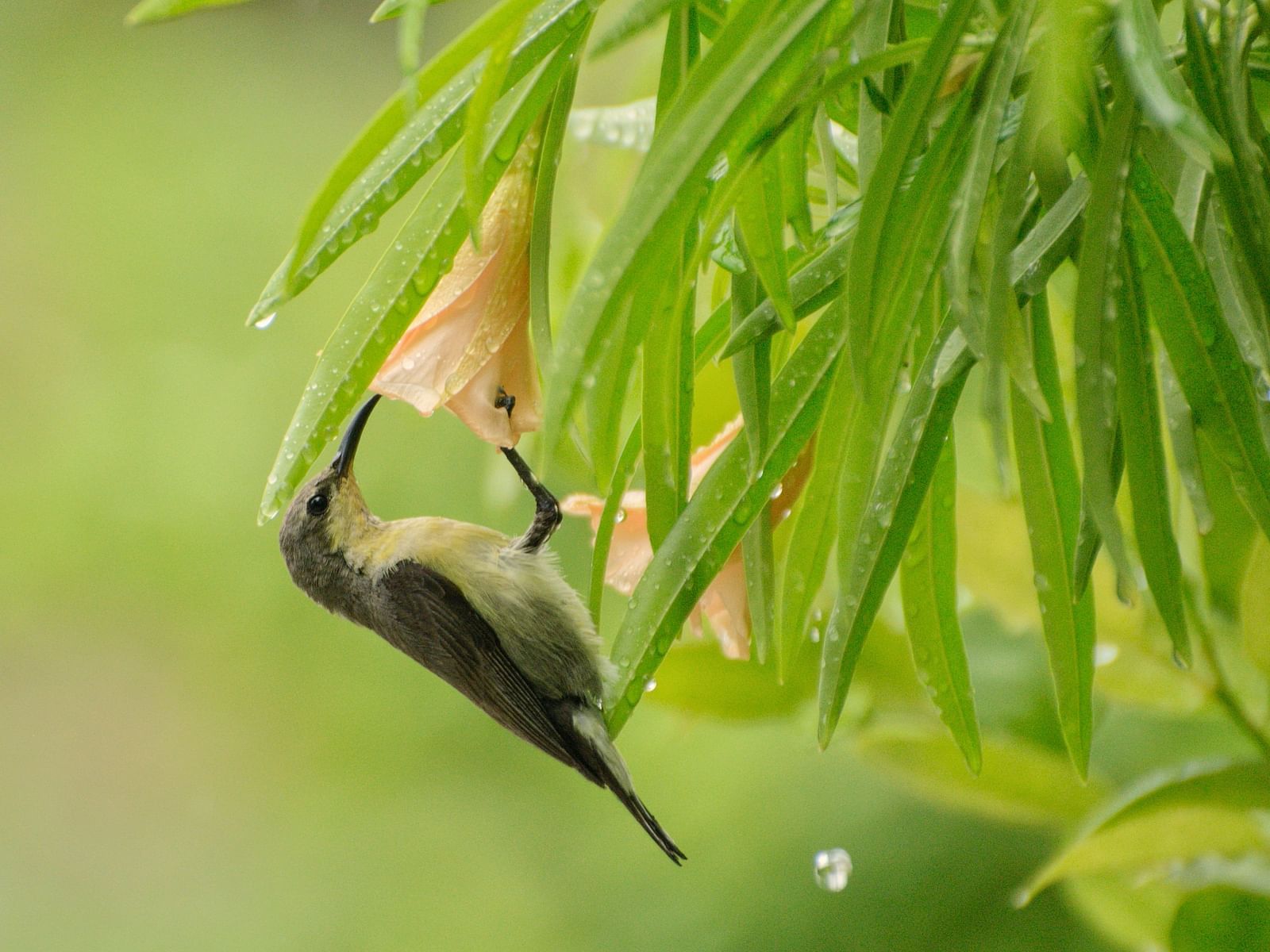
Purple Sunbird
The breeding male is a metallic blue and purple overall with maroon feathers on the breast. The female is olive above and yellow below. The nonbreeding male of this species is primarily olive-brown with blackish upperparts and yellow underparts with a blue-black band running down the throat and chest. Females can be distinguished from female Purple-rumped Sunbirds by their yellow (not greyish) throats. Seen in pairs, feeding chiefly on nectar, but they also take insects. Breeding males display by fluttering their wings in front of females while singing. They are found in gardens, cultivated areas, and forests.Grey Francolin
A small gamebird with an orangish face and fine barring throughout. Males and females are similar. Occurs in open grassy areas such as dry grasslands, scrub, and agricultural land. Often found in groups. Call, sometimes given simultaneously by several birds, is a loud repetitive 'kateetar-kateetar'.
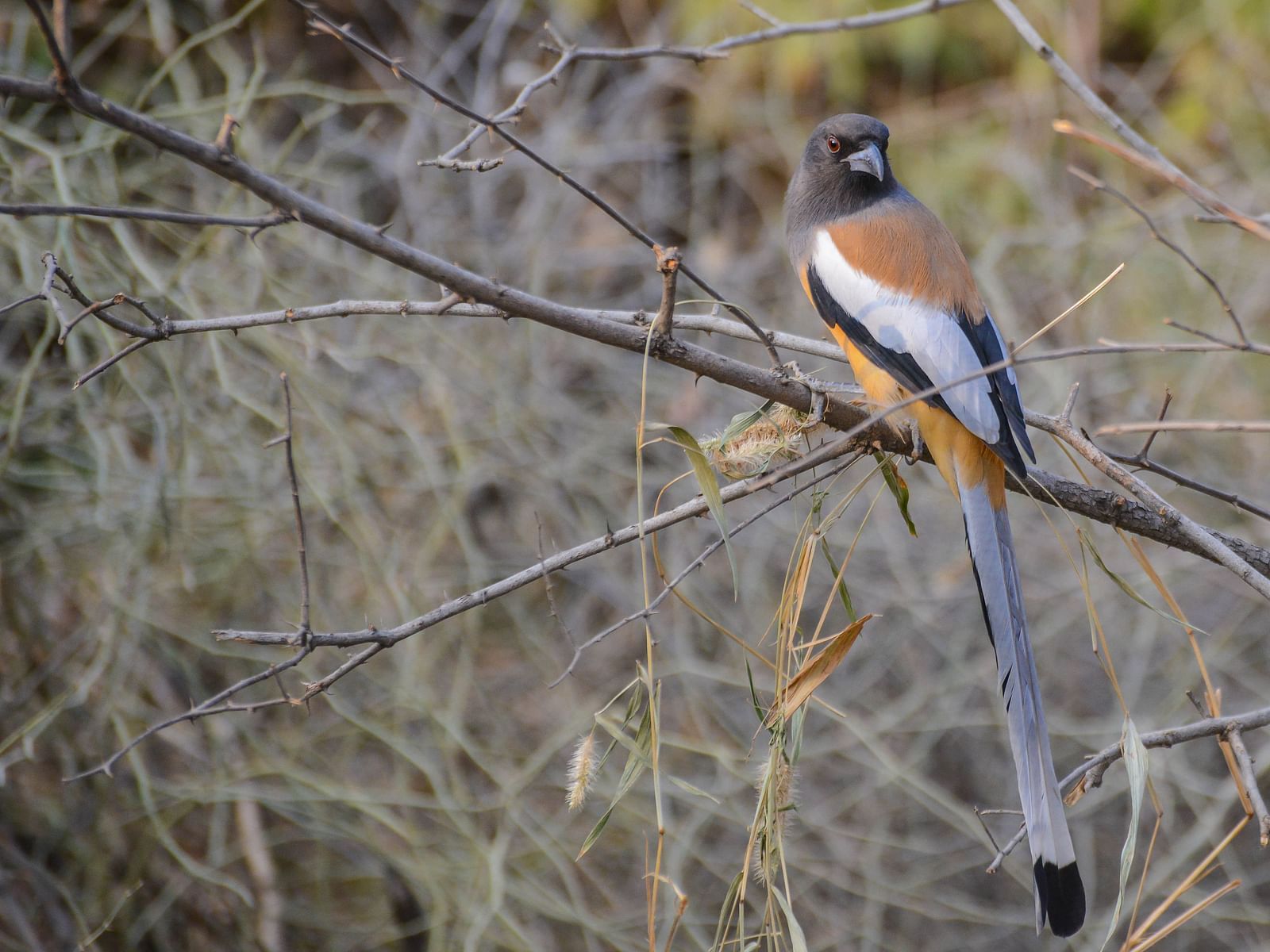
Rufous Treepie
A long and stiff-tailed bird with primarily rusty-brown upperparts and dull orangish underparts. The head, mantle, and neck region are a dull, sooty black. The long-graduated tail is pale grey with a wide black terminal band. Note the conspicuous silvery-grey, white, and black patterns on the wings. The blackish-grey bill is stout with a hooked tip. Found in a wide range of habitats from woodlands to scrubby patches, singly or in pairs feeding in the treetops. The call is a loud metallic 'krowwiiii kroo'.Long-tailed Shrike
A large, noisy Shrike is typical of open habitats across Asia. Adults have a dark mask and a light grey upper back with a variable amount of orange on the lower back and flanks. The eastern subspecies has a complete black cap; the melanistic form has a more extensive dark mask and is darker overall. Smaller Bay-backed Shrike have thicker black masks; Grey-backed Shrike has darker grey back and lacks orange colouration and white wings. Juveniles are difficult to separate from other juvenile shrikes. Gives loud, screeching calls; also mimics other birds.

Rose-ringed Parakeet
Vibrantly bright green parakeet, frequently found in woodland, parks, and gardens, where feeds mainly in trees. Nests in cavities, including holes in buildings. Easily overlooked if quiet, as the bright green plumage blends easily with foliage. Note the very long slender tail and bright red bill; the male has a narrow black-and-rose neck ring. Closely resembles the larger Alexandrine Parakeet, which has a wine-red patch on each shoulder. Like other parakeets, raucous and social, often appearing in noisy groups.Plum-headed Parakeet
A brilliantly coloured parakeet; males have a plum-coloured head while females have a greyish-blue head. Endemic to the Indian subcontinent where it can occur in any well-wooded area outside North East India and the high Himalayas. Similar to the largely non-overlapping Blossom-headed Parakeet, but shows a darker shade of plum or grey on the head and a white-tipped tail (not yellow). They also lack the red shoulder patch seen on blossom-headed females. A yellow upper bill separates it from all overlapping parakeets. Their call is a distinctive, short, and high-pitched ''tui'.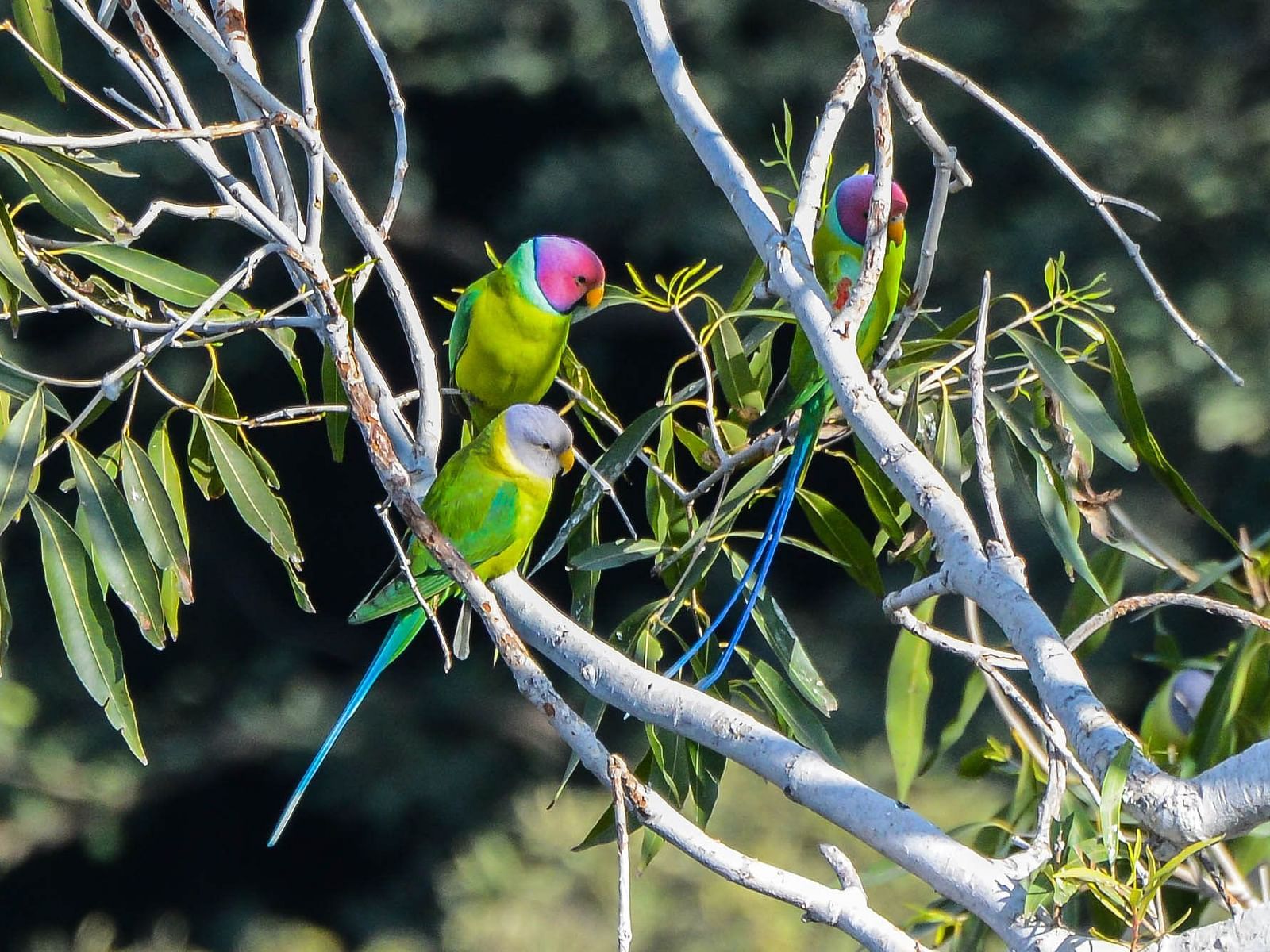
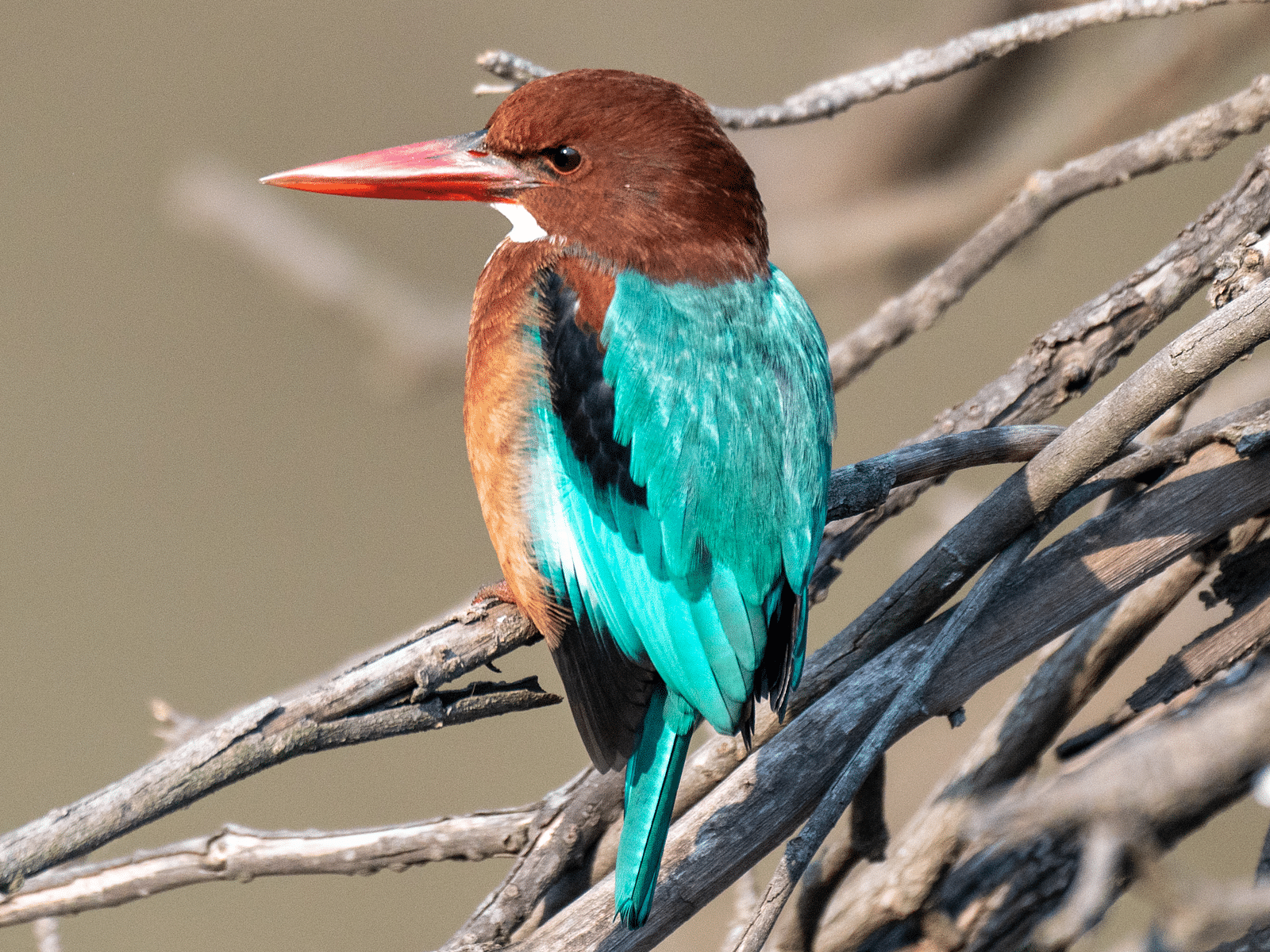
White-throated Kingfisher
Large-headed, predominantly brown kingfisher with electric-blue back and wings, heavy orange bill, and snow-white patch from the throat through the breast. Common both near and away from water; frequently seen perched on fence posts and telephone lines near wetlands, lakes, agricultural fields, and clearings. Gives jarring, raptor-like descending trills and cackles, often in flight.Brahminy Starling
A small fawn-coloured starling with a long wispy crest that usually lies limp over the back of its head, but the feathers on its cheek and upper breast stand up and away from its cheek. Its upperparts are grey and the dark tail is tipped in white. Note the yellow bill with a blue base. Often seen in small family groups, feeding on fruits and nectar as well as insects on the ground or in the trees. They have a wide repertoire of calls and are also given to mimicking other species.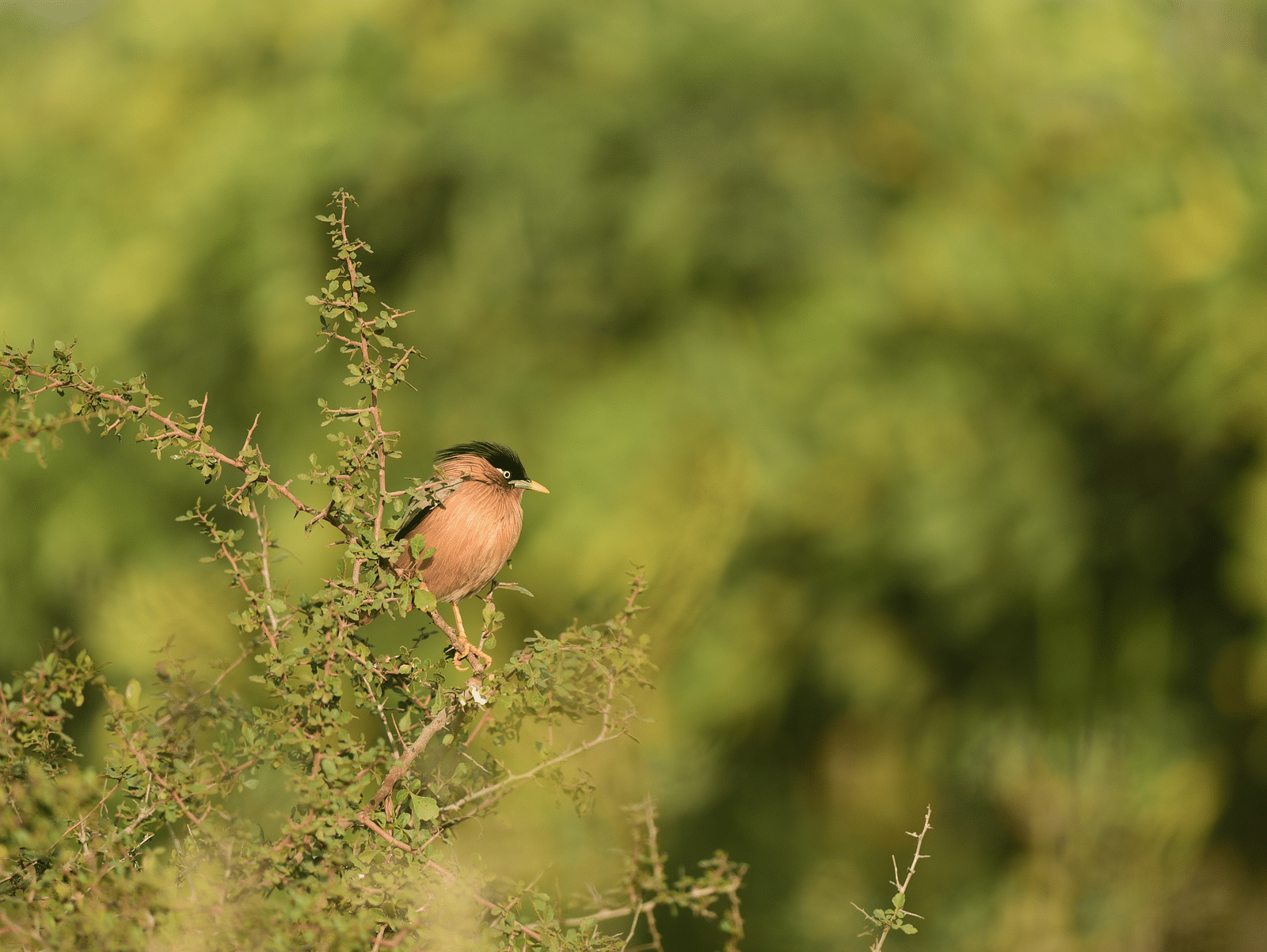
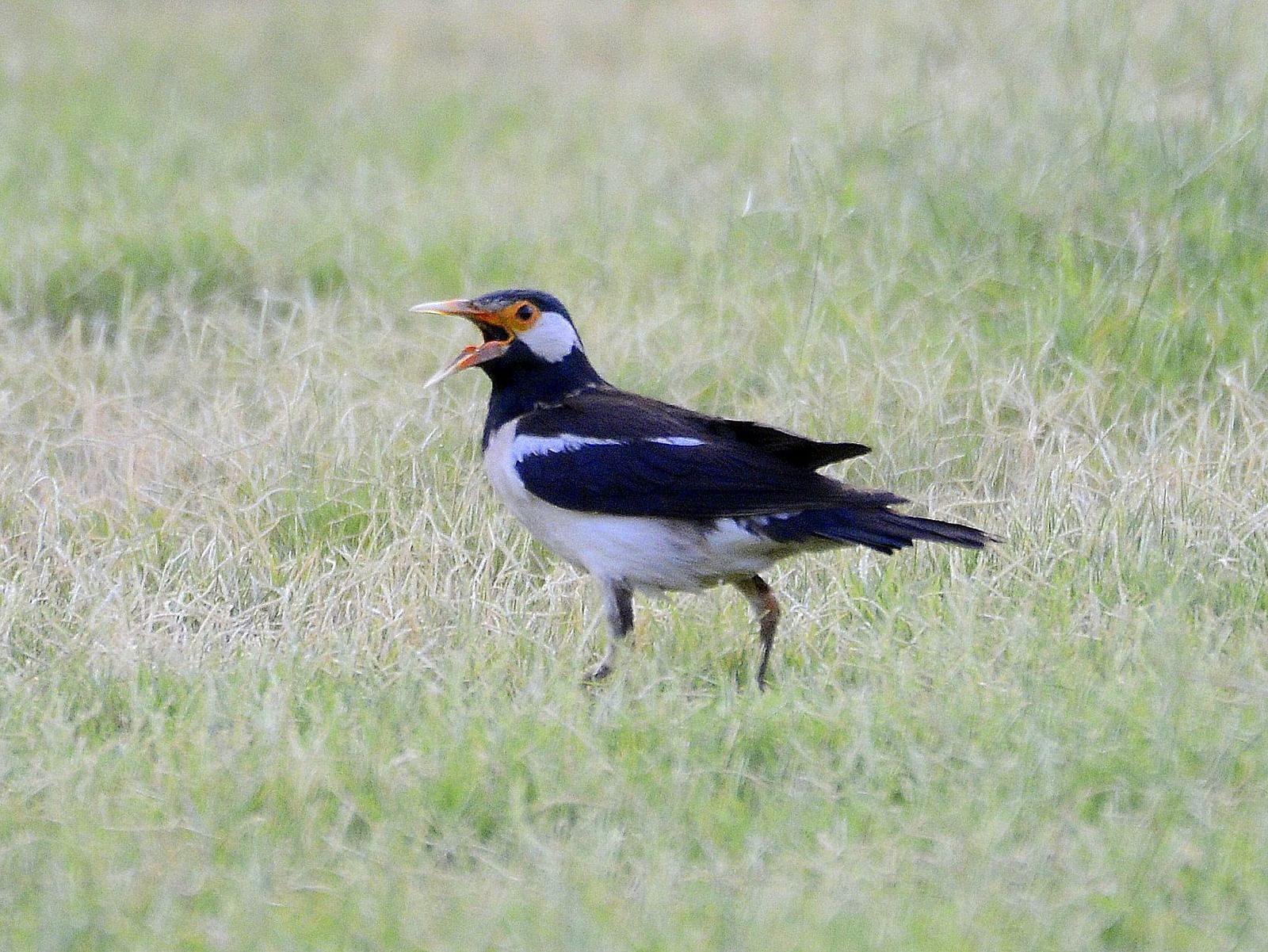
Asian Pied Starling
This sharply attired black-and-white starling has a pointed yellowish bill with an orange base. Note the bare, deep orange patch around its eye that contrasts with its white cheek. Seen in loose flocks close to human habitation feeding on human refuse. Garbage dumps, damp grazing lands, and well-wateredparks are its favoured haunts. Noisy with a variety of calls that include mimicked sounds of other birds.Eurasian Collared Dove
Large pale dove with a black crescent on the nape. Slightly smaller and paler than Rock Pigeon, with a proportionately longer, square-tipped tail. Favours farms and suburbs; avoid areas with extensive forests. Typically seen in pairs or small loose groups; forms larger flocks in winter. Widespread and common throughout much of Eurasia, India, and northern Africa.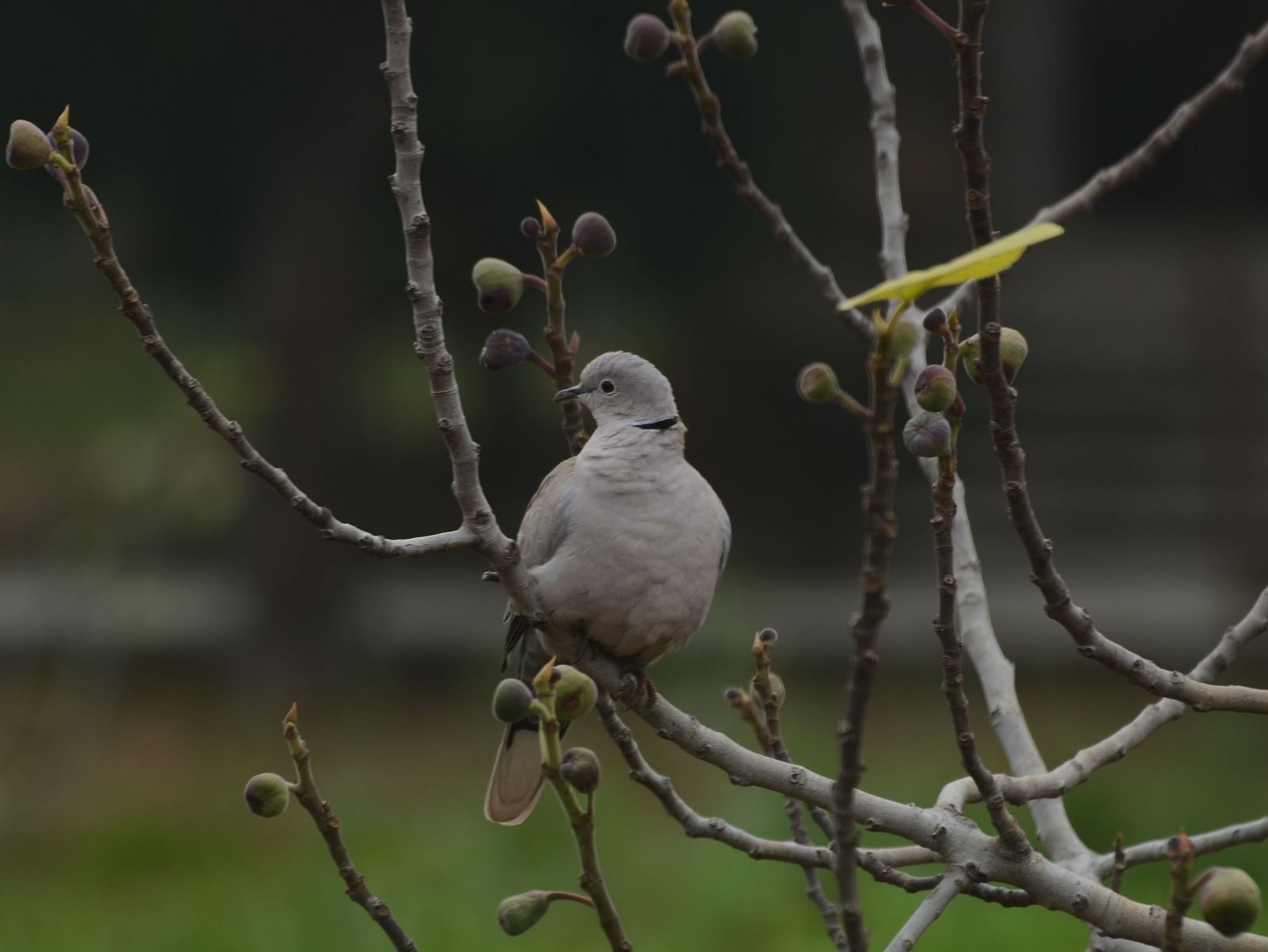
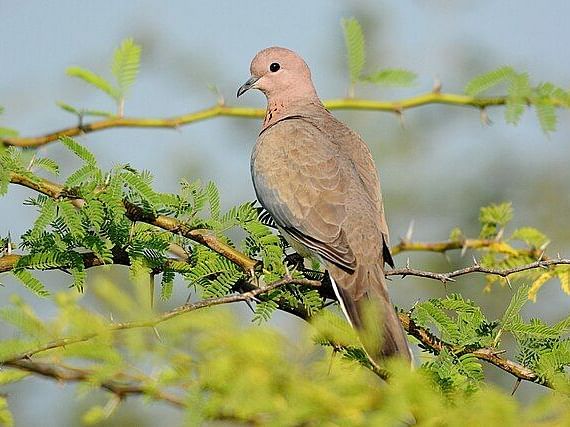
Laughing Dove
Small, similar in size to European Turtle-Dove. The tail is strikingly long with white corners and a grey centre, but is all white underneath. Its body is pastel shades of brown and pink with a spotted black collar. Usually associated with human-modified landscapes, such as plantations, gardens, and urban areas as long as some trees are present. The call is a repetitious 'coo-coo coo ru”' replicated 5–8 times.Red-wattled Lapwing
A distinctly marked lapwing with a black breast and throat and a red bill with a black tip. It also sports red wattles in front of the eyes and a white patch that runs down the cheeks to the underparts. In flight, note the black flight feathers that contrast with the white wing patch. Usually found in small groups around water bodies, agricultural fields, and dry land. They feed primarily on insects, catching them in a typical plover-like manner, running a short distance and picking up food from the ground.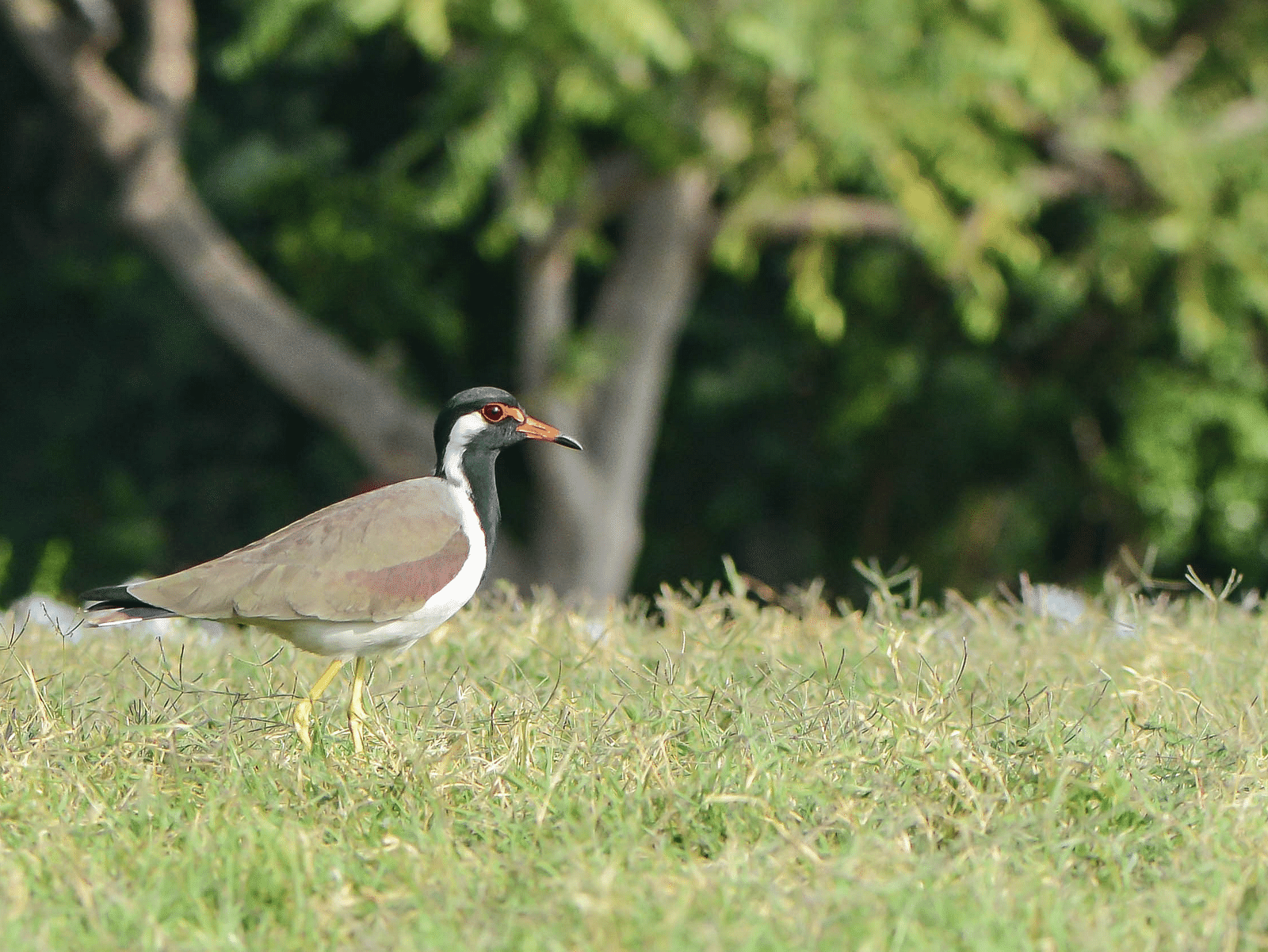
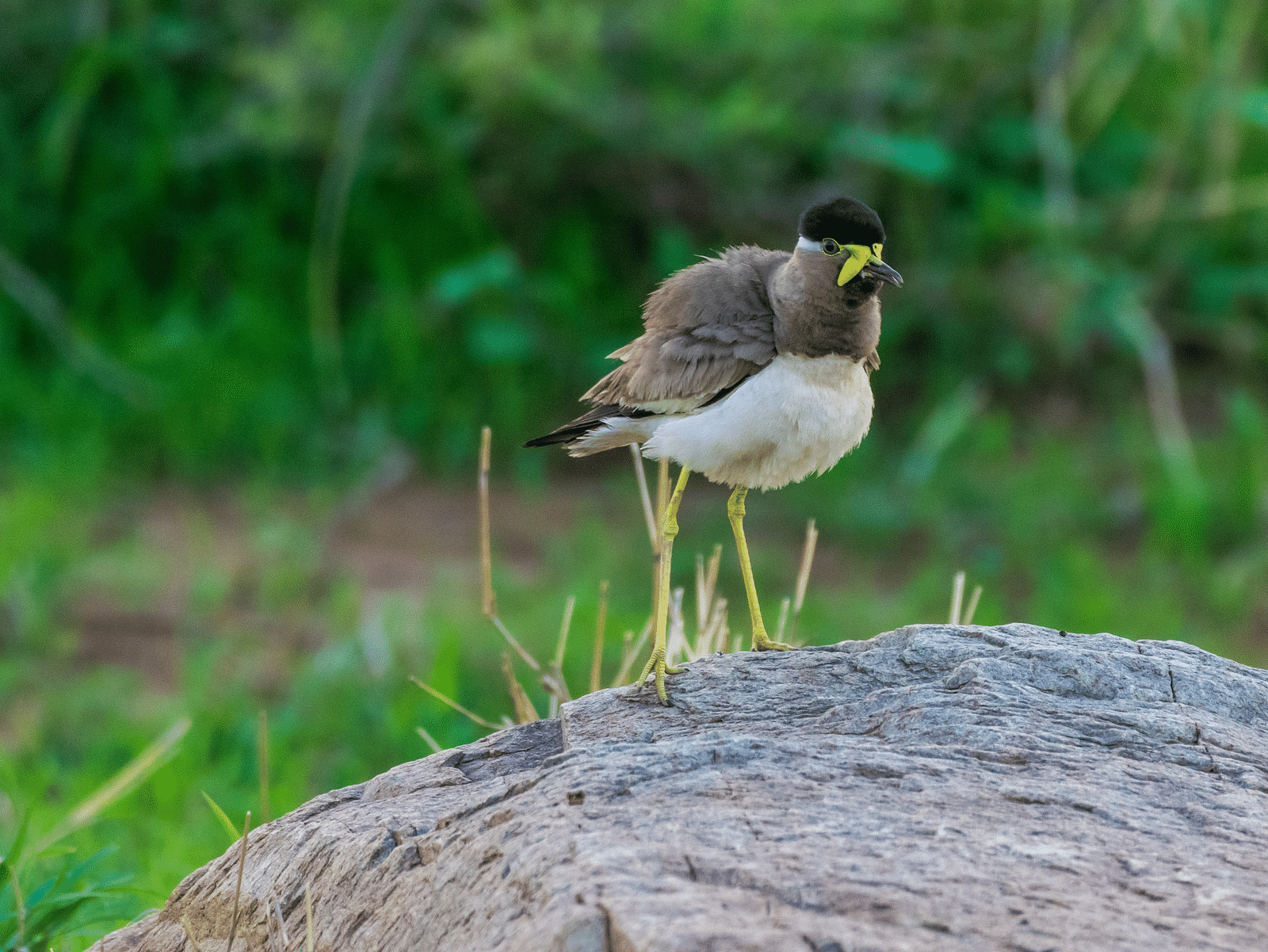
Yellow-wattled Lapwing
Elegantly long-winged brown lapwing. Breeding adult has a clean black cap, bright yellow facial wattles, and a white belly. Non-breeding adults and juveniles are more mottled overall and lack a solid black cap. Note contrasting wing and tail patterns when in flight. Prefers dry open areas, often well away from water. Gives a loud rasping tern-like call and a loud 'cheeeee’it' in alarm; generally, not as noisy as other lapwings.Large Gray Babbler
Large grey-brown babbler with piercing yellow eyes. They can be confused with Jungle Babbler, with which it sometimes associates; look for strong dark lores and a darker bill. Favours scrubby areas, forest edges, and open dry forests. Like many other related babblers, typically hops around on the ground in flocks. Chatters persistently; the most common call is a loud, nasal 'kaaa-kaaa-kaaa'.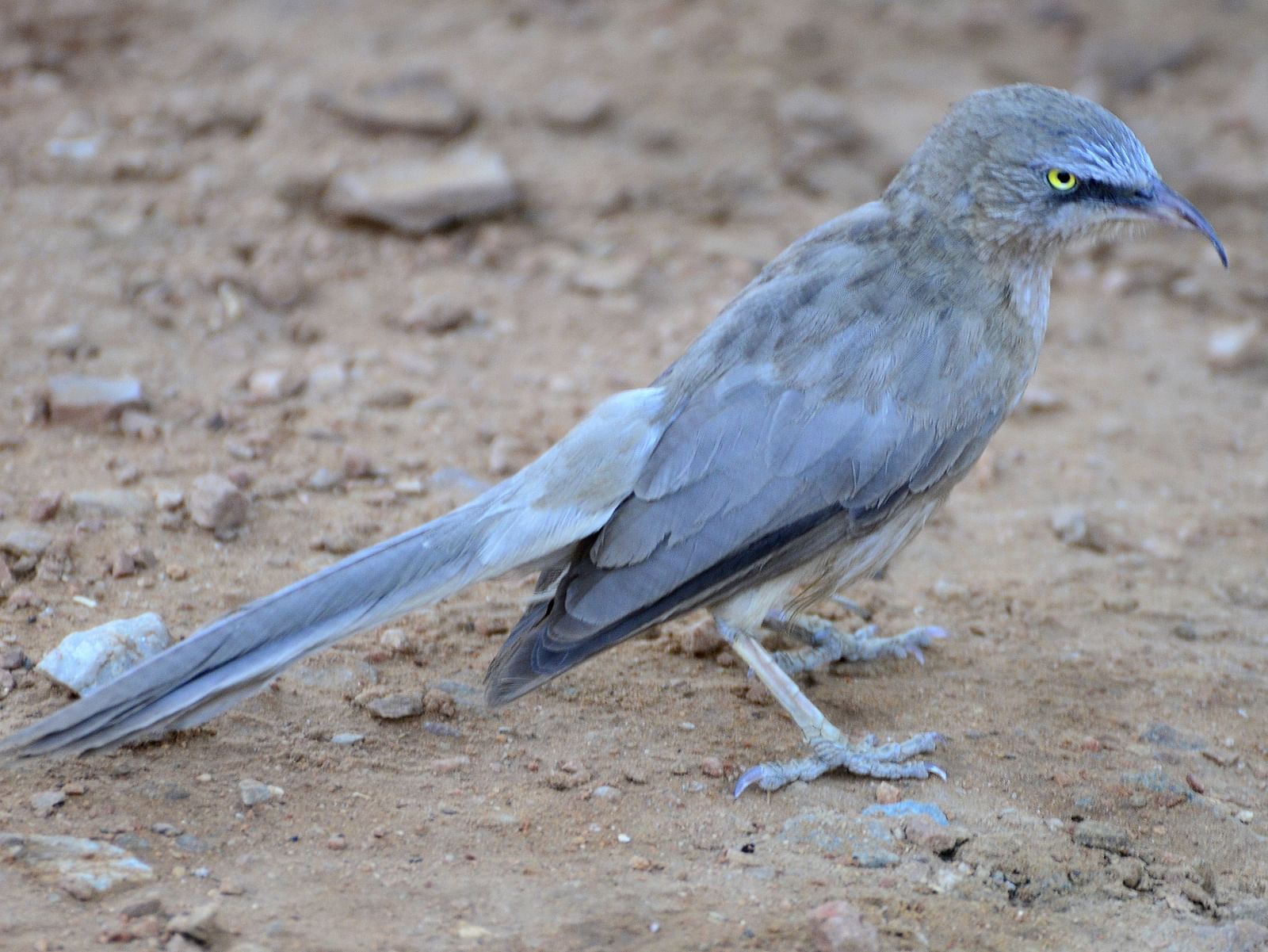
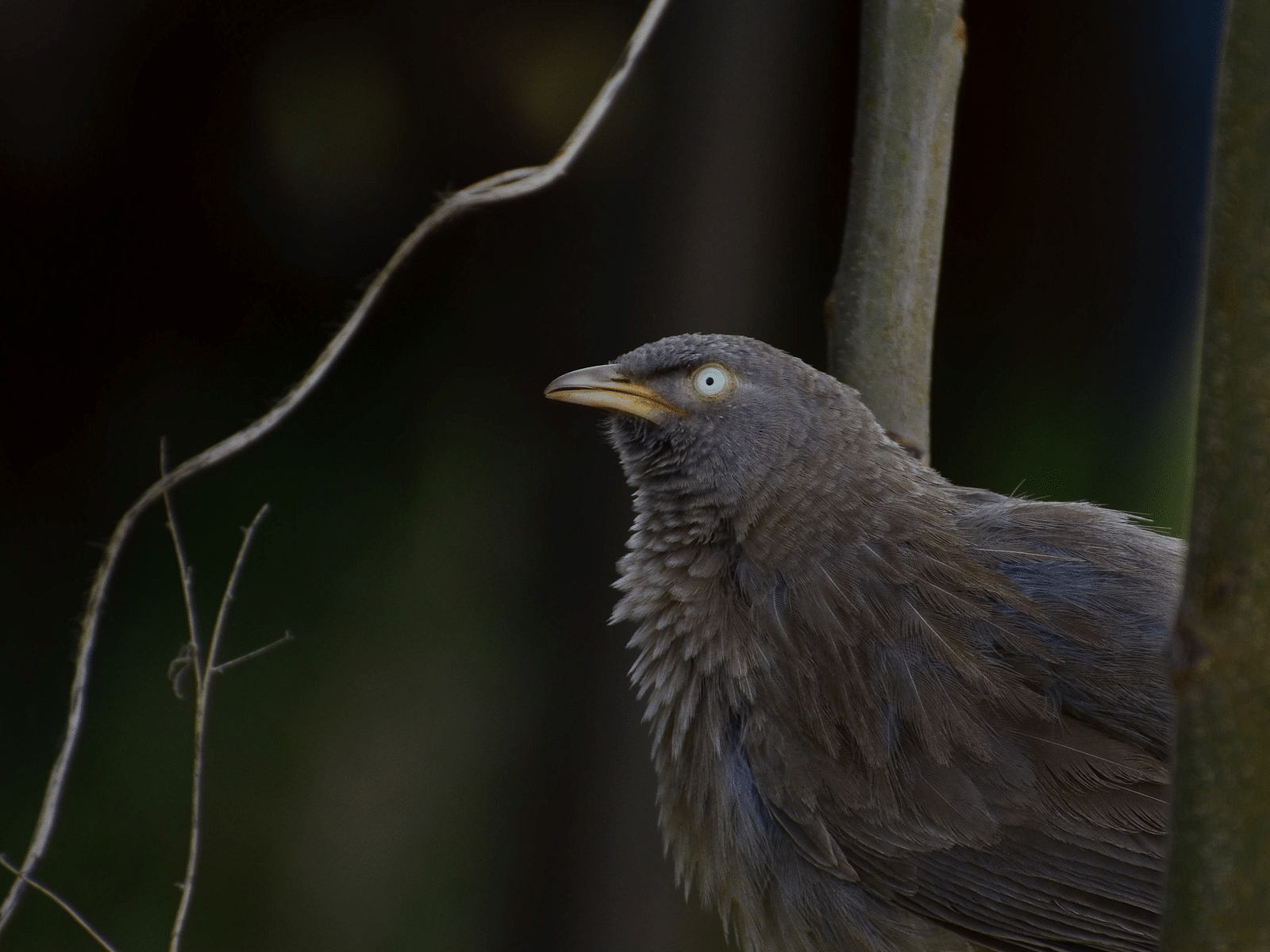
Jungle Babbler
This familiar ash-brown-coloured babbler has a yellow bill and a dark brow in front of the eye that contrasts with its pale eye giving it a perpetual 'angry' look. It has vague streaking on the upper parts, diffuse mottling on its throat, and barring on its tail. The multiple races vary slightly in colour and strength of markings except the race Somerville of the NW peninsula which has dark brown outer wing feathers that contrast with the rest of the wing. They are often seen in noisy flocks hopping on the ground and flicking litter in search of food.Common Babbler
Faintly streaked warm buffy-brown babbler. Dark eyes and pale throat separate this species from the similar Striated Babbler. A common and familiar city and town bird throughout much of its range; A bird of scrubby plains, open forests, forest edges, and overgrown cultivation. Whickers, trills, squeaks, and chirps loudly as flocks hop about on the ground and in low undergrowth.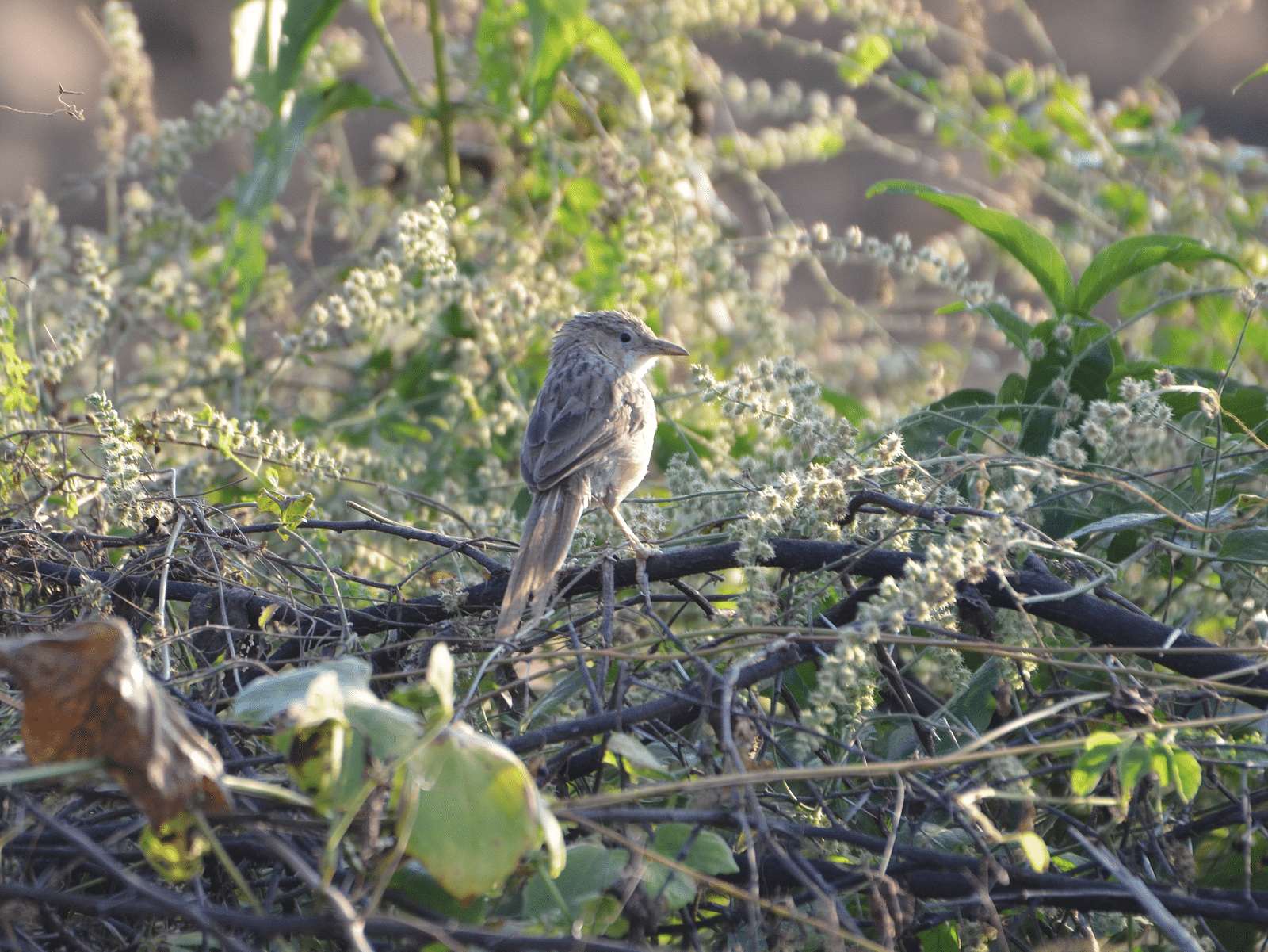
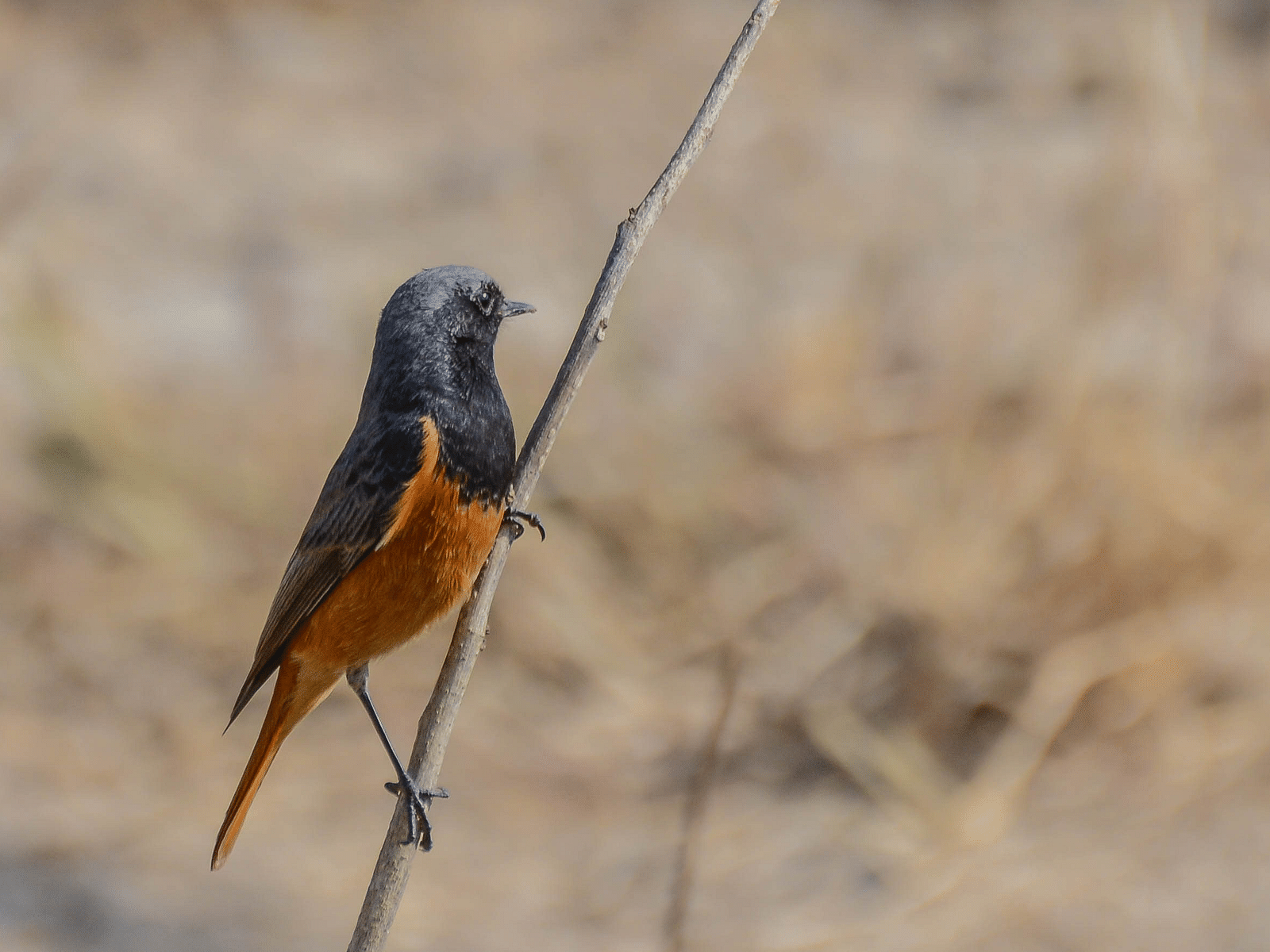
Black Redstart
Distinctive orange tail, best seen when flashed open or in flight. Varies considerably within range. Western birds are darker overall; the male is slaty blackish, females are smoky greyish overall. Eastern males have extensive orange on the underparts, and females are warm brown. Occupies varied open habitats, often but not always with a rocky component. Feeds mainly on or near the ground, perching rather upright; sings from prominent perches.Common Stonechat
Chunky little bird of open landscapes; often sits on exposed perches. The breeding male has a black head, broad white half-collar, and rusty-red chest. Non-breeding males are patchier, with a paler head and chest. The female is predominantly streaky brown above, with a weaker, less contrasting face and chest pattern. European Stonechat is very similar, and can pose identification problems where the species overlap; look for Siberian’s larger white wing patch, duller orange on the chest, and whiter rump.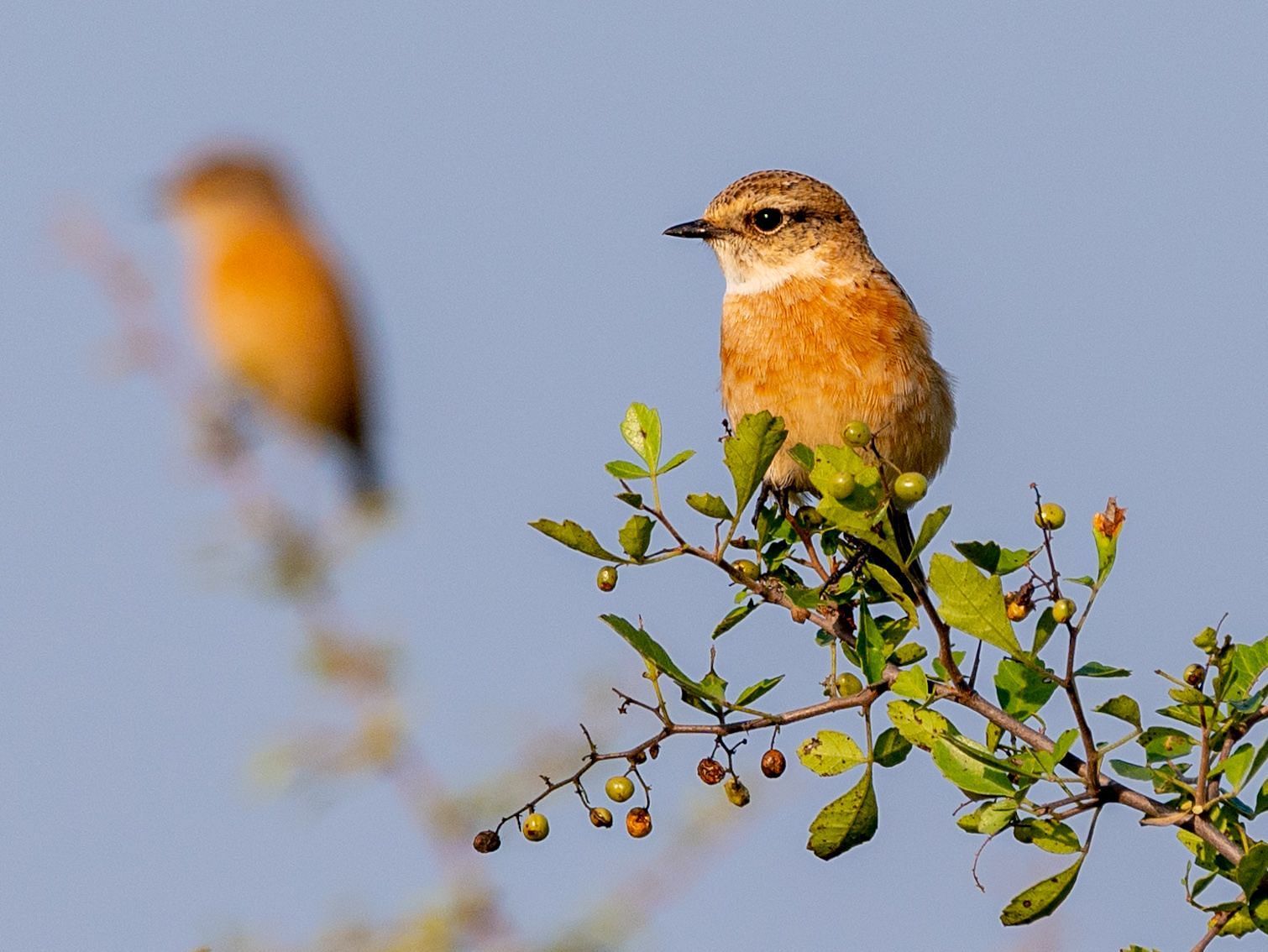
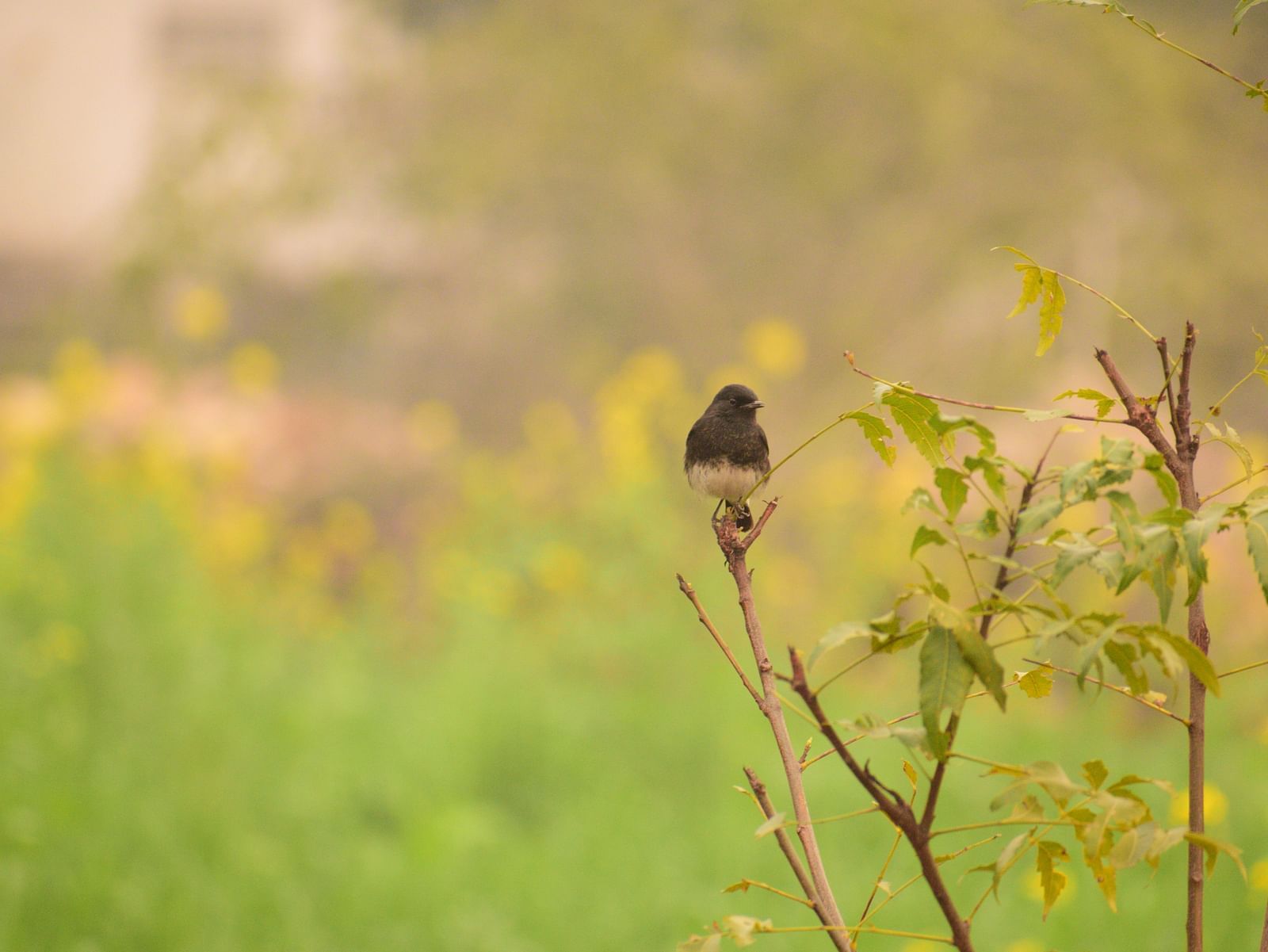
Pied Bush Chat
A sedentary 'chat' associated with open habitats in tropical and subtropical Asia. Males are black with a white vent and a white wing patch. Females are dark brown with a reddish- brown rump and underparts. Females can resemble the migratory Siberian Stonechat but can be separated by the absence of an eyebrow and of any white on the collar or wing. Rather conspicuous; it may use and sing from any open perch, unlike more discerning stonechats. Calls include a rising “whee” and hard, decisive 'churk'.River Tern
Widespread inland tern of South and mainland Southeast Asia. Breeding adults have full black caps and pale grey wings; white bellies, larger size, and heavier structure distinguish this species from the less common Black-bellied Terns where their breeding ranges overlap. Non-breeding adult has patchy black on the head instead of a full cap, and juvenile has mottled brownish-greyback with a partial black “mask”. Favours freshwater sites, breeding on sandy islands. Gives a grating 'kyyeer' note.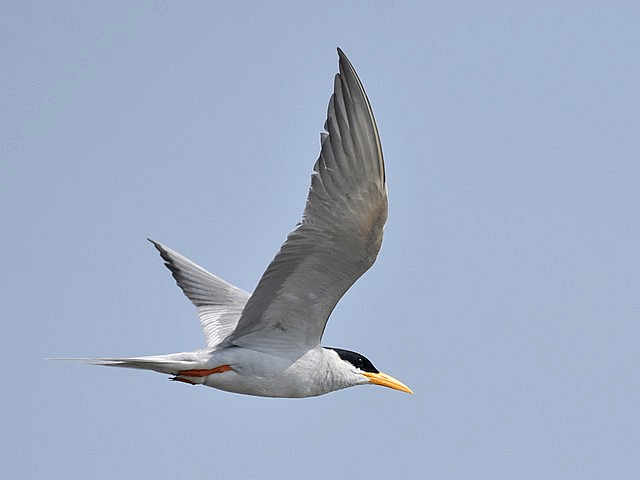
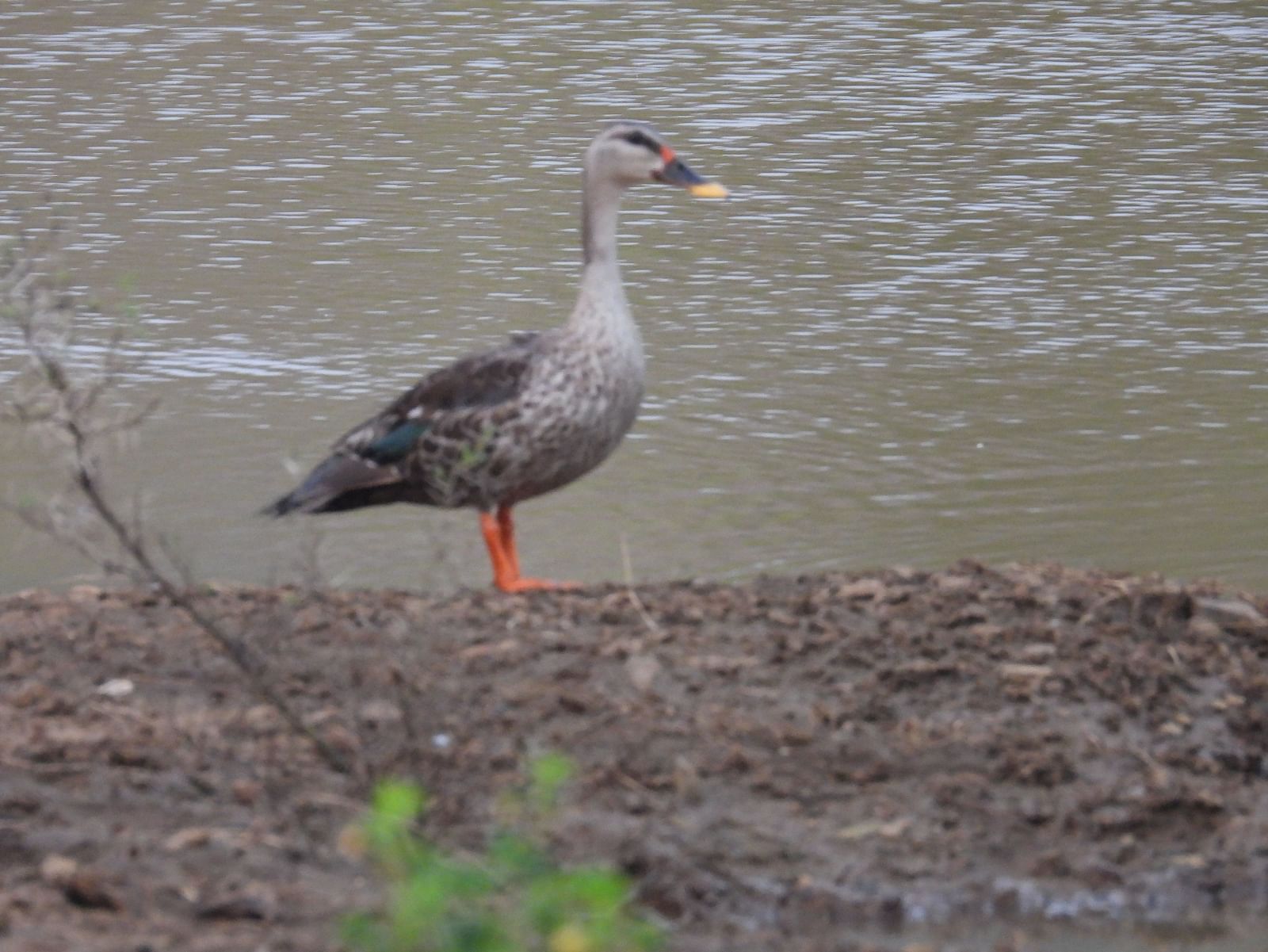
Indian Spot-billed Duck
A large greyish-brown duck with a diagnostic yellow-tipped black bill and a red spot at the base of the bill (missing in certain subspecies). In flight, note the green panel in the wing that is bordered in white. Often seen in small groups dabbling or tipping up in shallow water or walking on marshy land at the edge of freshwater lakes or in cultivated fields. Usually not seen associating with other species.Little Cormorant
An all-black ducklike waterbird with a distinctive flattish head and a bill that is sharply hooked at the tip. Smallest of the cormorants found in the region. Breeding adults have white plumes on the sides of the head. Like all cormorants, frequently seen swimming with its body low in the water, head and neck pointing upward, and suddenly disappearing underwater to catch fish. Often perches upright on a rock, drying itself with outstretched wings. Seen singly or in small groups in inland water bodies.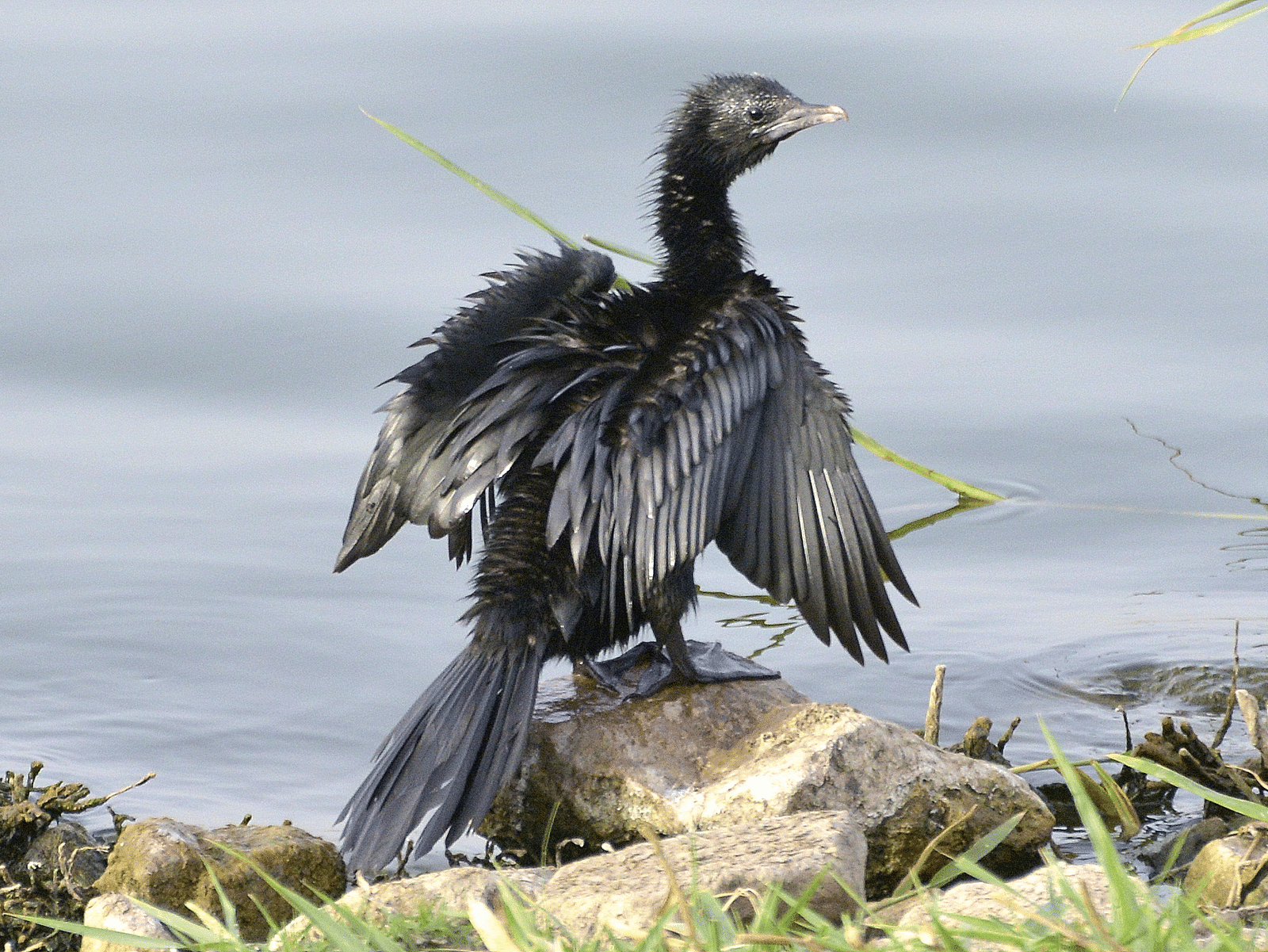

Indian Cormorant
A dark ducklike waterbird with blue-green eyes, a rounded head, a sloping forehead, and a long and slender bill that is sharply hooked at the tip. Adults are black, immatures are brownish with white underparts. Like all cormorants, frequently seen swimming with its body low in the water, head and neck pointing upward, and suddenly disappearing underwater to catch fish. Often perches upright on a rock, drying itself with outstretched wings. Seen in small groups, fishing communally in inland water bodies.Great Cormorant
Large cormorants are found nearly worldwide. Note the large size, white patch on the throat, and lack of crest. Breeding adults show circular white patches on flanks. Immatures typically have contrasting white belly; African 'White-breasted' also has extensive white underparts in all Plumages. Often spotted standing on rocks or pilings. Dives frequently, feeding on fish. Found in many types of water bodies, ranging from rivers to reservoirs to marine environments; in North America, restricted to the coastal North Atlantic.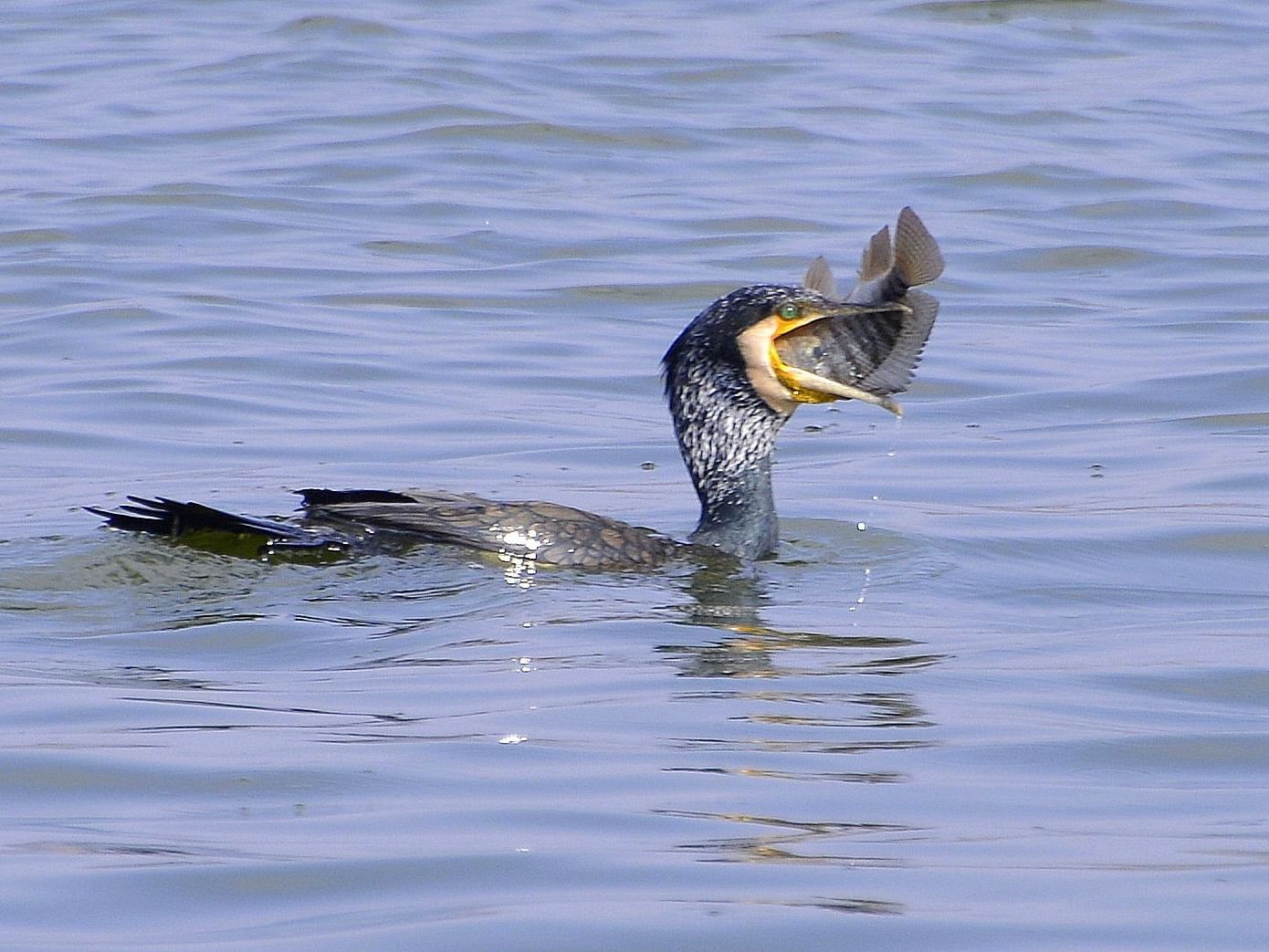
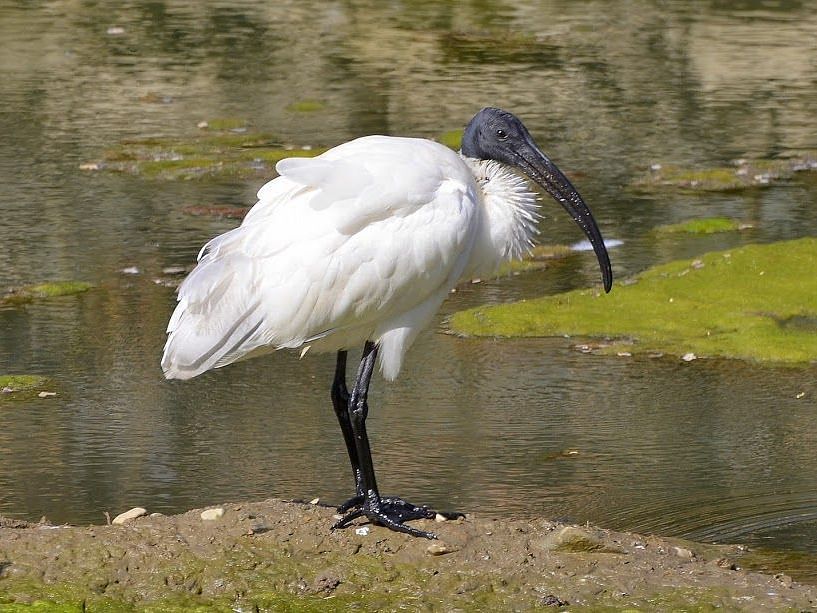
Black-headed Ibis
A large wader with a white body and bare black head and neck. Males and females look similar and both have greyish tail feathers. It probes into mud and shallow water with its long, down-curved black bill, sometimes submerging its entire head. Found primarily around wetlands including agricultural fields and occasionally around coastal areas, but also seen foraging in dry fields and human-modified landscapes.Grey Heron
Generally, quite common and conspicuous in wetland habitats from marshes and tidal flats to small ponds, ditches, and wet fields; nests colonially in tall trees. Mainly seen as singles or in small groups, standing quietly in or at the edge of the water, less often hunting in fields. The plumage is mostly grey overall, with a paler neck; the adult has a white crown, black eyebrows, and a black shoulder patch. Like other herons and egrets, flies with necks pulled in to form a bulge.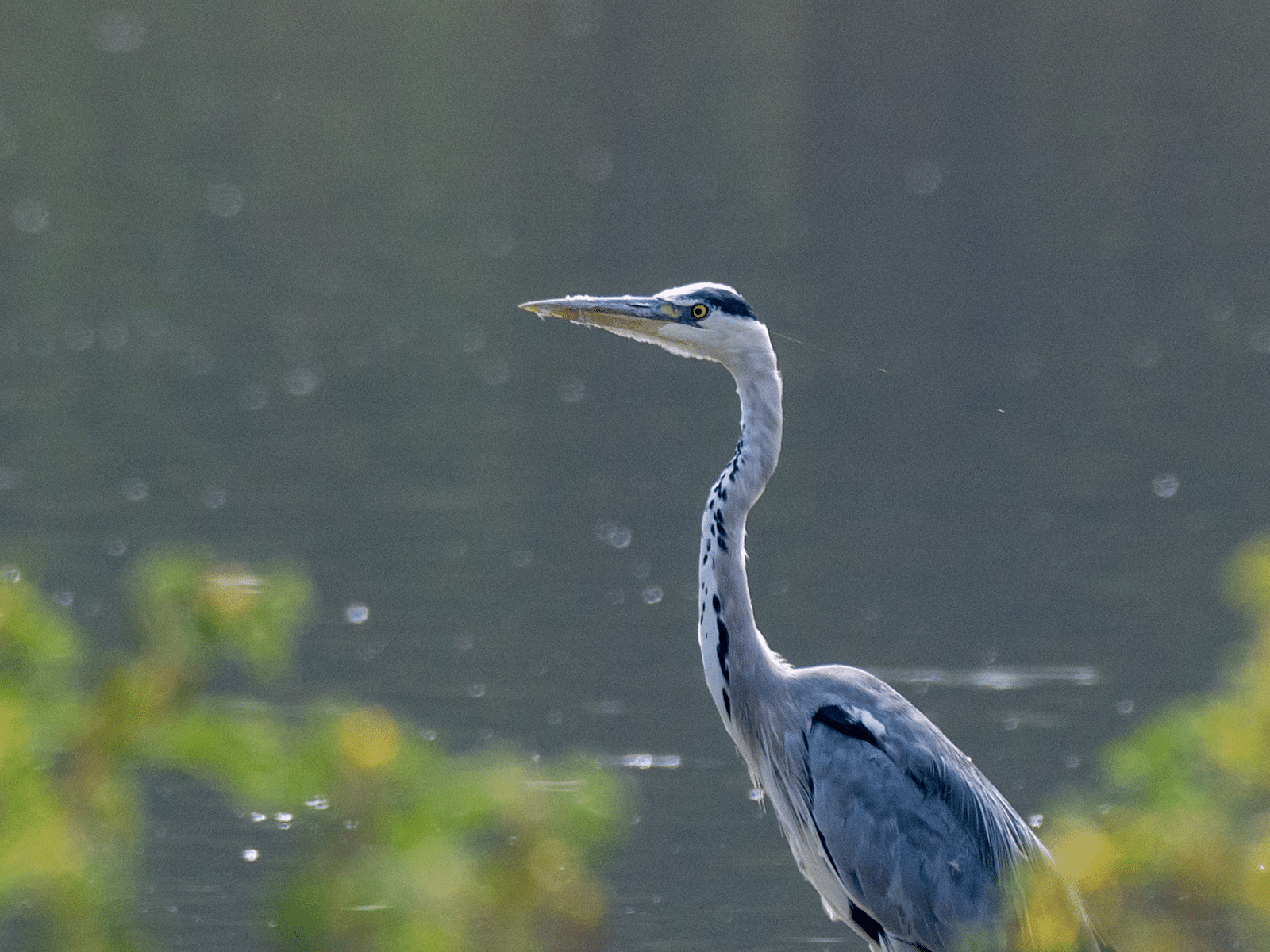
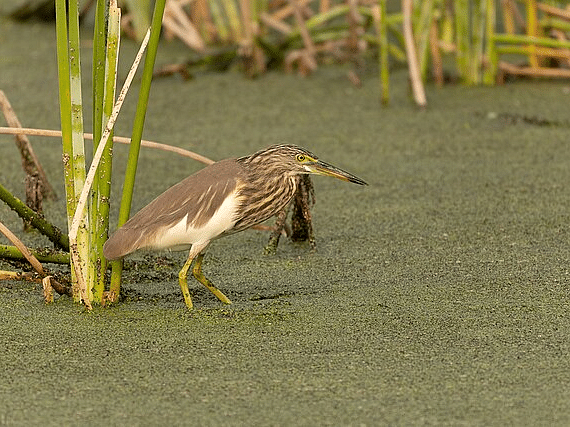
Pond Heron
A small Heron that is common in most aquatic habitats across the Indian subcontinent. Adults in breeding plumage have a dark reddish brown back which contrasts with a yellowish head, neck, and breast. In non-breeding plumage, they are virtually indistinguishable from non-breeding Chinese Pond-Heron. In flight, adults appear surprisingly white due to their strikingly white wings, underparts, and tail. Although typically solitary, large numbers often gather where food is plentiful. Prone to seasonally local movements and vagrancy.Black-winged Stilt
Fairly common to locally common in warmer regions. Favours wetlands with open shallow water, often brackish; breeds on bare ground near water, often in noisy colonies. Striking and essentially unmistakable, with elegant shape, boldly pied plumage, long hot-pink legs, and long, very fine bill. Feeds by wading in the water, picking with its bill from the water's surface. In flight, long pink legs stick out far beyond the tail.
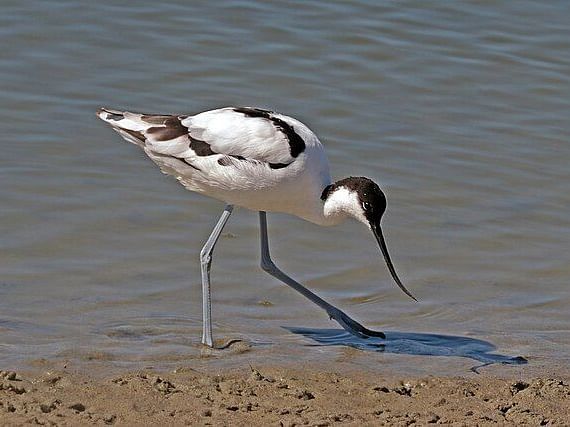
Pied Avocet
Striking and essentially unmistakable, with elegant shape, boldly pied plumage, long bluish-grey legs, and long, slender, upcurved bill. The curve is stronger in females. Usually breeds in small colonies; nesting birds call noisily. Nonbreeding flocks locally number in the hundreds. Feeds while wading or swimming, sweeping its bill side to side. Most common in coastal wetlands and brackish lagoons and estuaries, but will also appear inland, particularly on or near large lakes.Bar-headed Goose
Striking and distinctive goose. Bold black-and-white head and neck pattern unlike any other goose; also note the orangey-yellow bill and legs. In flight appears mainly pale grey with a broad black trailing edge to its wings. Breeds around lakes and marshes on highland plateaus; winters in lowland wetlands and fields. Native to East and South Asia, but escapees from waterfowl collections are occasionally seen free-flying elsewhere in the world.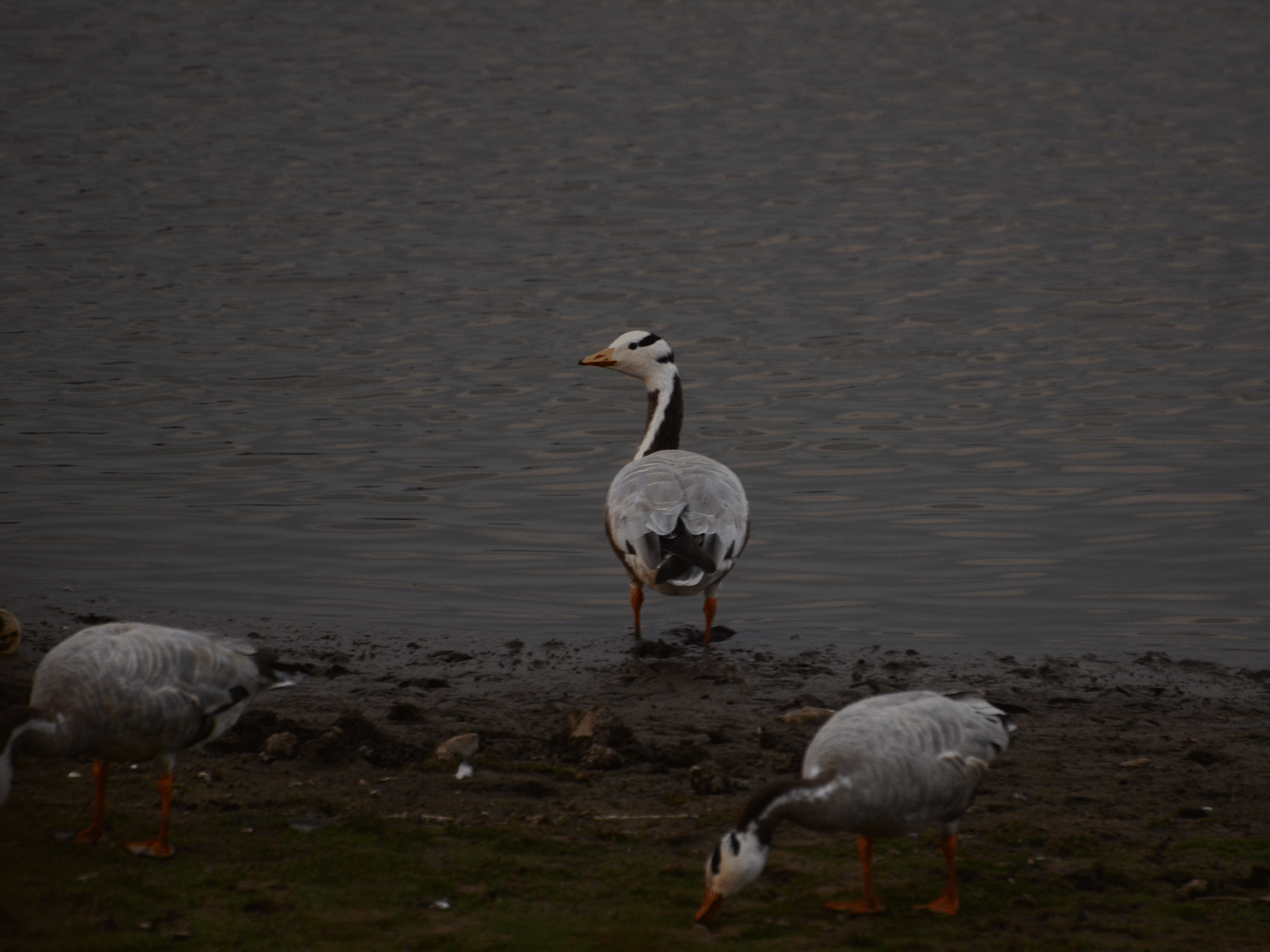
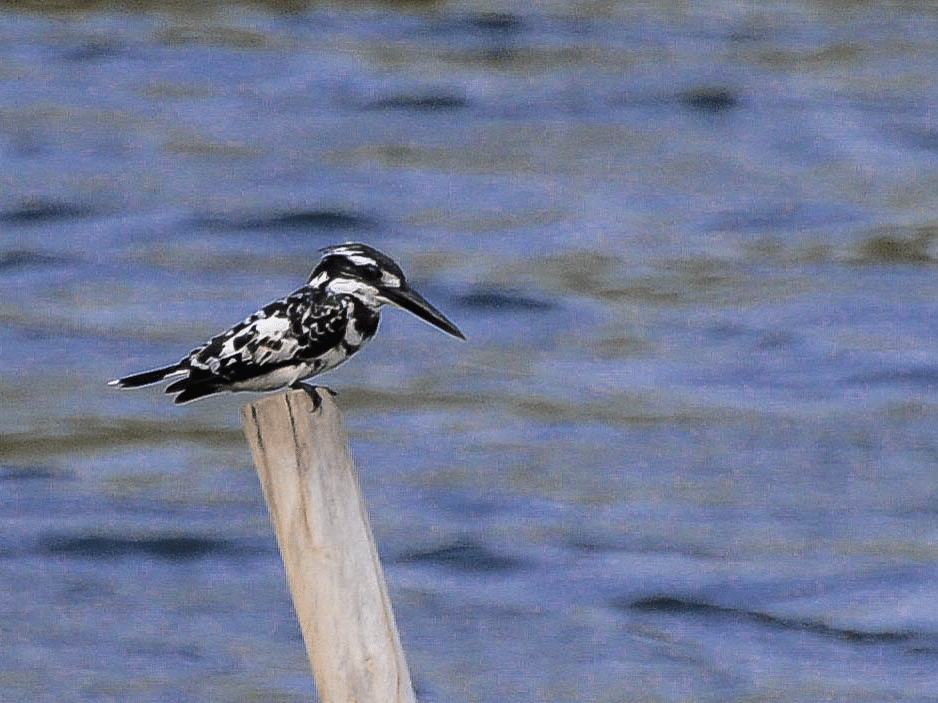
Pied Kingfisher
Boldly marked black-and-white kingfisher with short, bushy crest and glossy all-dark bill. Superficially similar to the Crested Kingfisher, but smaller, with a much more distinctly patterned head and breast and less erect crest. Frequently seen perched in pairs or small groups. Often hovers over water when seeking prey. Inhabits a wide range of waterside habitats, from lakes to estuaries to mangroves.Pied Kingfisher
Boldly marked black-and-white kingfisher with short, bushy crest and glossy all-dark bill. Superficially similar to the Crested Kingfisher, but smaller, with a much more distinctly patterned head and breast and less erect crest. Frequently seen perched in pairs or small groups. Often hovers over water when seeking prey. Inhabits a wide range of waterside habitats, from lakes to estuaries to mangroves.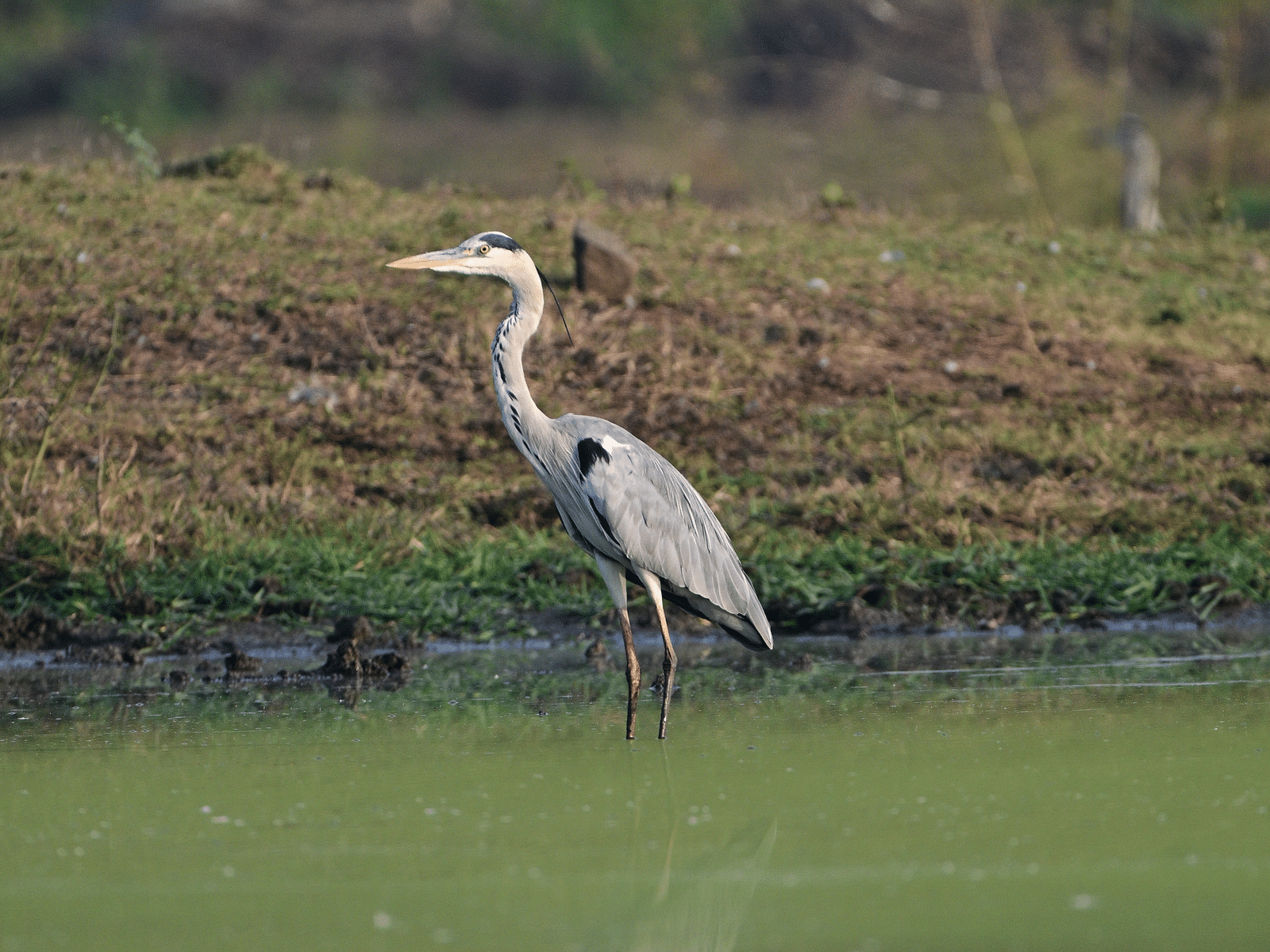
Other Blogs
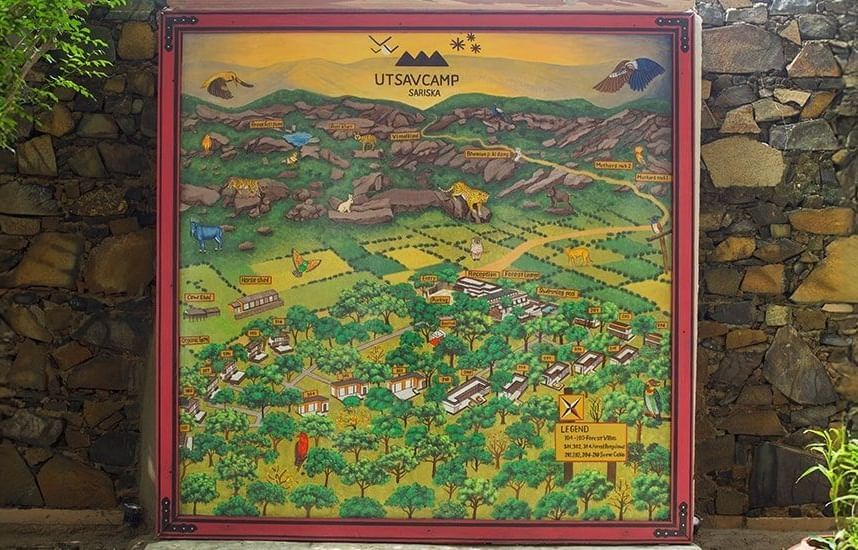
Behind the Scenes of a Hand-painted Map
Behind the scenes of Utsav Camp Sariska’s hand-painted Naturalist Map—7 days of artistry capturing the wild spirit of Sariska Tiger Reserve.
Read More
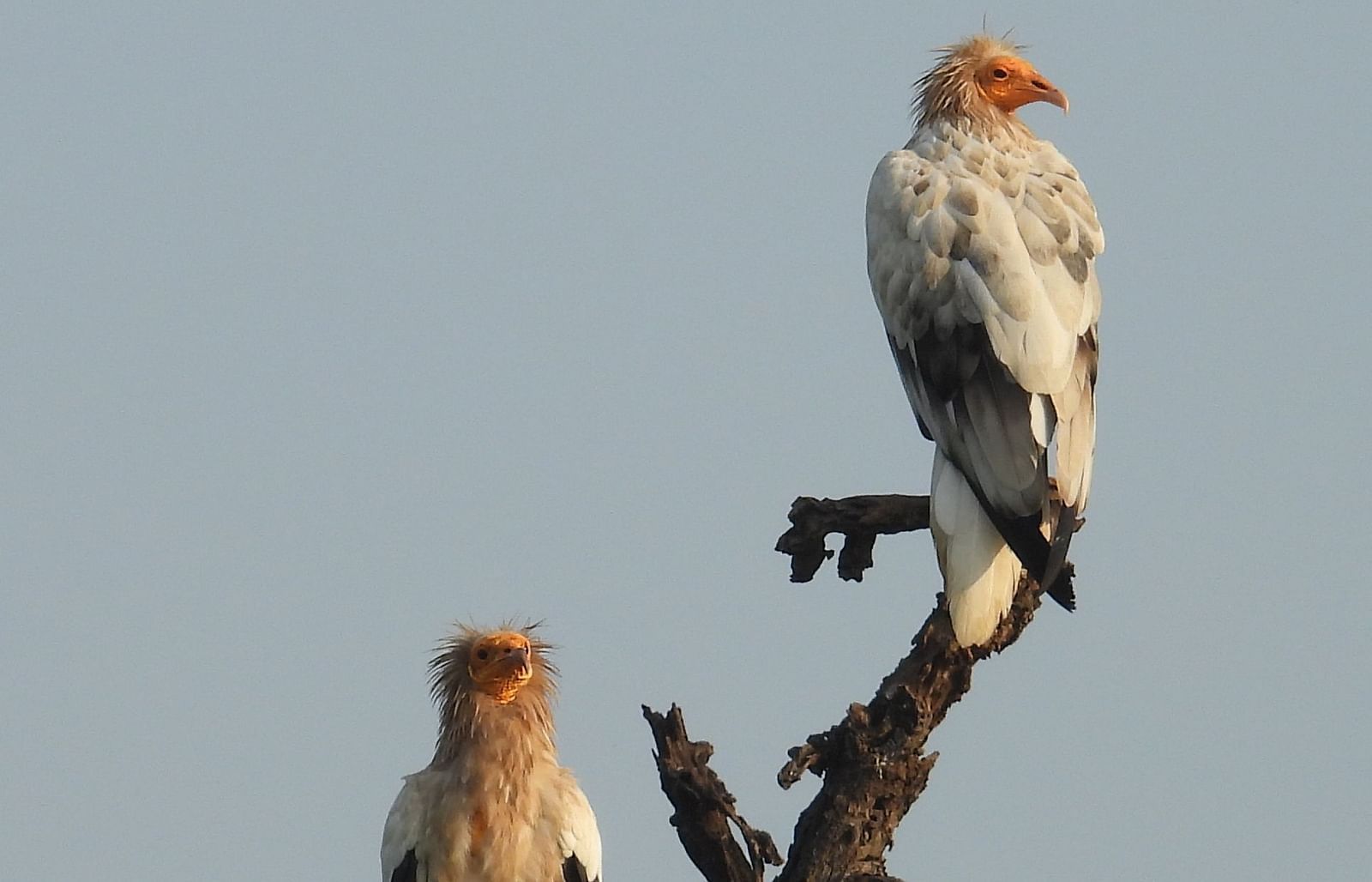
Vultures of Sariska
Discover the diverse vulture species inhabiting Sariska, their ecological roles, and the environmental effects they bring.
Read More
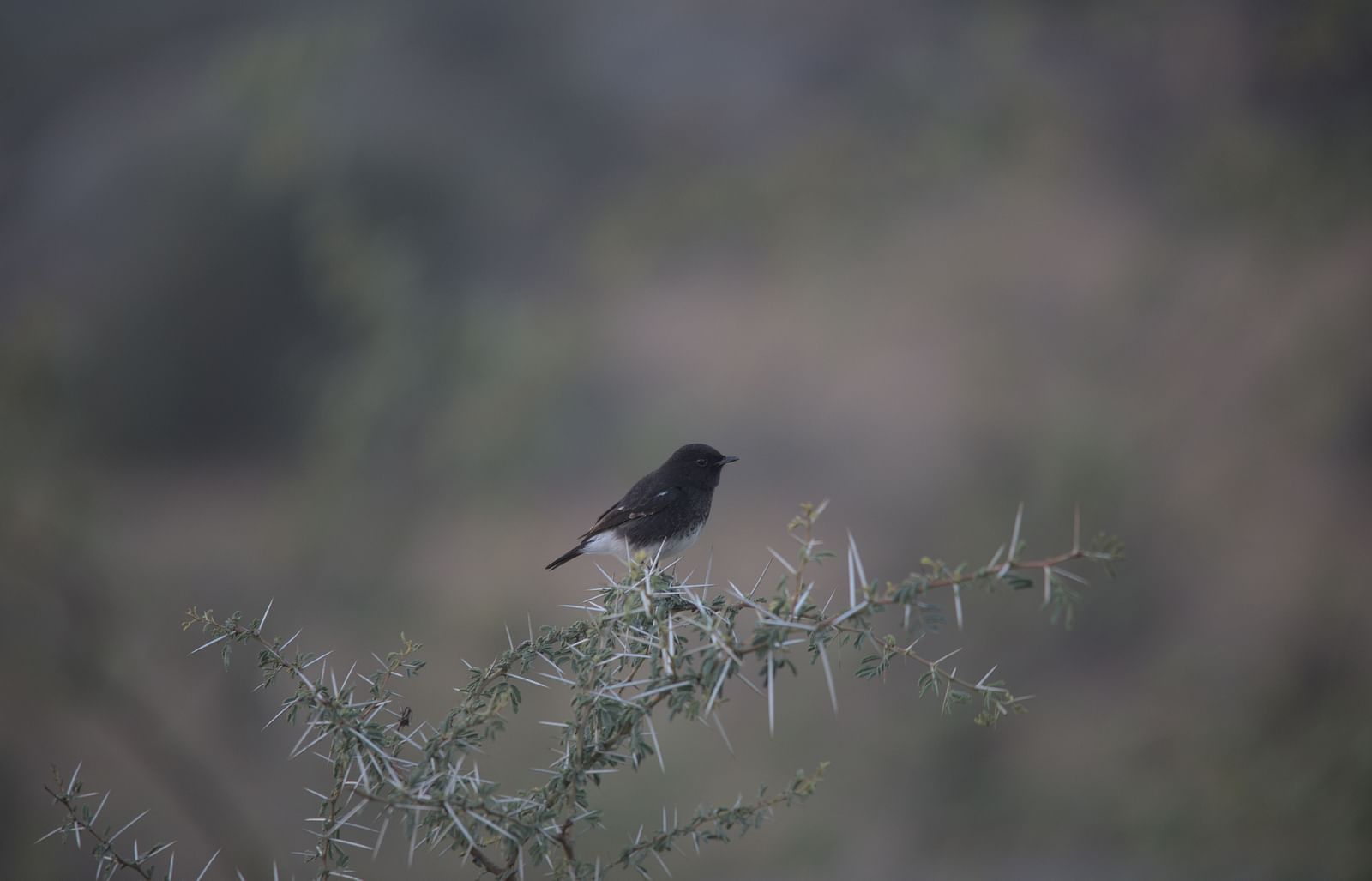
Deciduous Jungle of Sariska
The deciduous jungle of Sariska is home to a variety of trees and plants, each with significant medicinal and commercial value. Discover more about these remarkable species in this detailed guide.
Read More
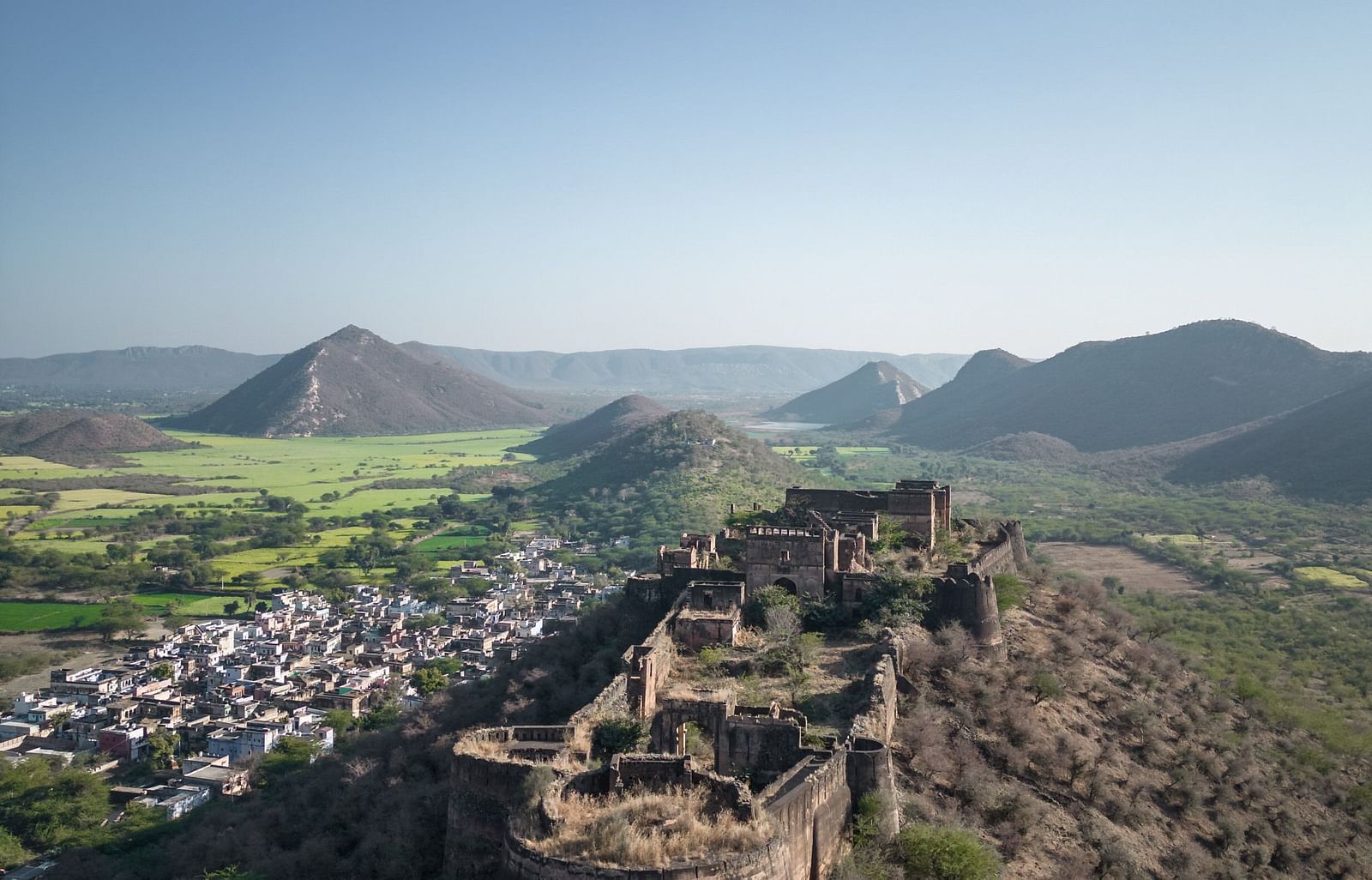
Mythological Importance of Sariska
Learn about the mythological significance of Sariska, including its temples, forts, and more, in this insightful blog.
Read More
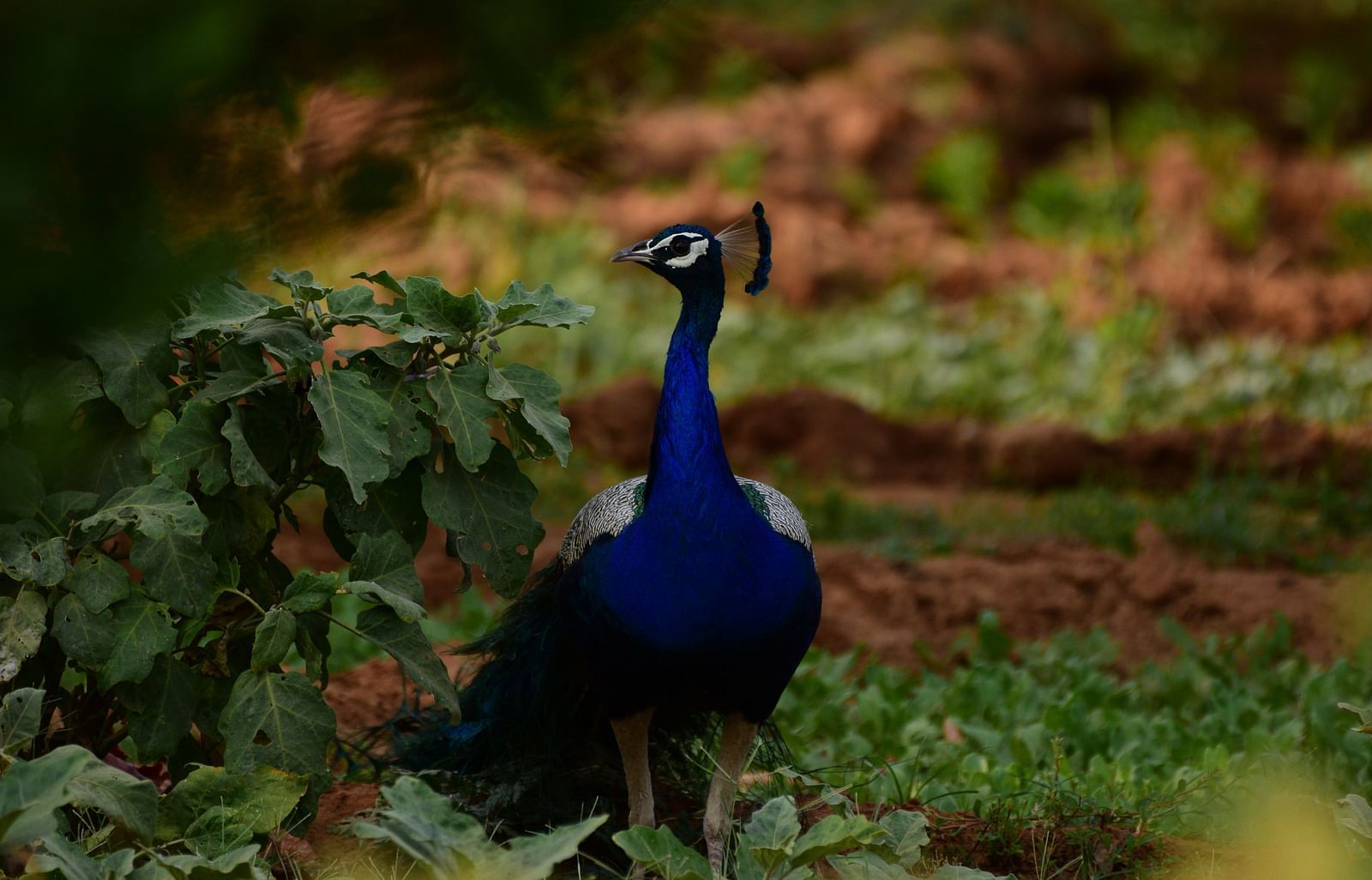
Sariska Tiger Reserve
Uncover Sariska Tiger Reserve in Alwar, Rajasthan! Delve into its history, park timings, and more in this detailed blog.
Read More
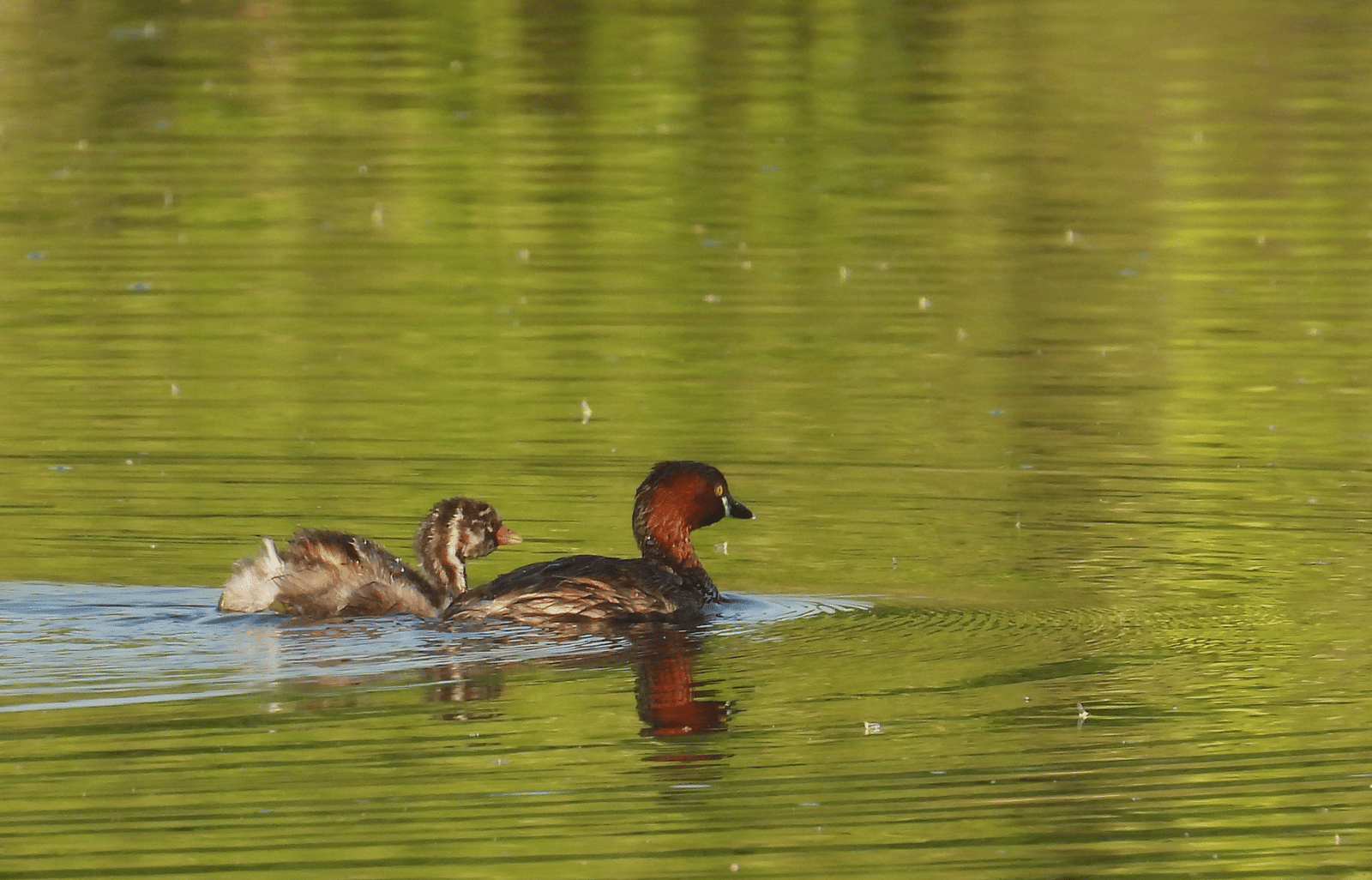
Migratory Birds of Sariska
Delve into the migratory birds of Sariska and discover their seasonal migration patterns in this insightful blog.
Read More
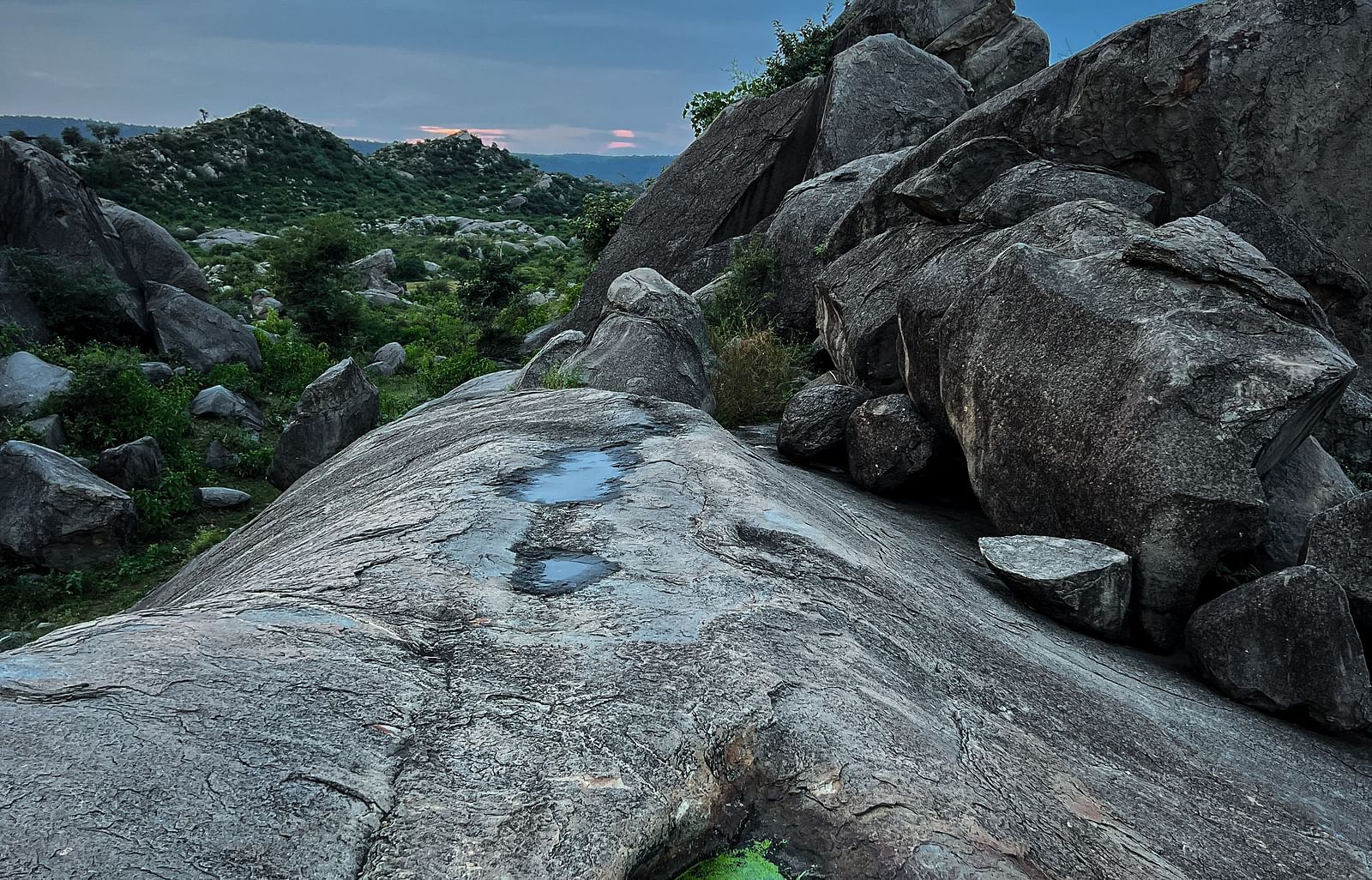
Boulders of Tehla
Explore the enchanting world of Tehla's boulders, and its diverse flora and fauna, beautifully depicted in this detailed blog.
Read More
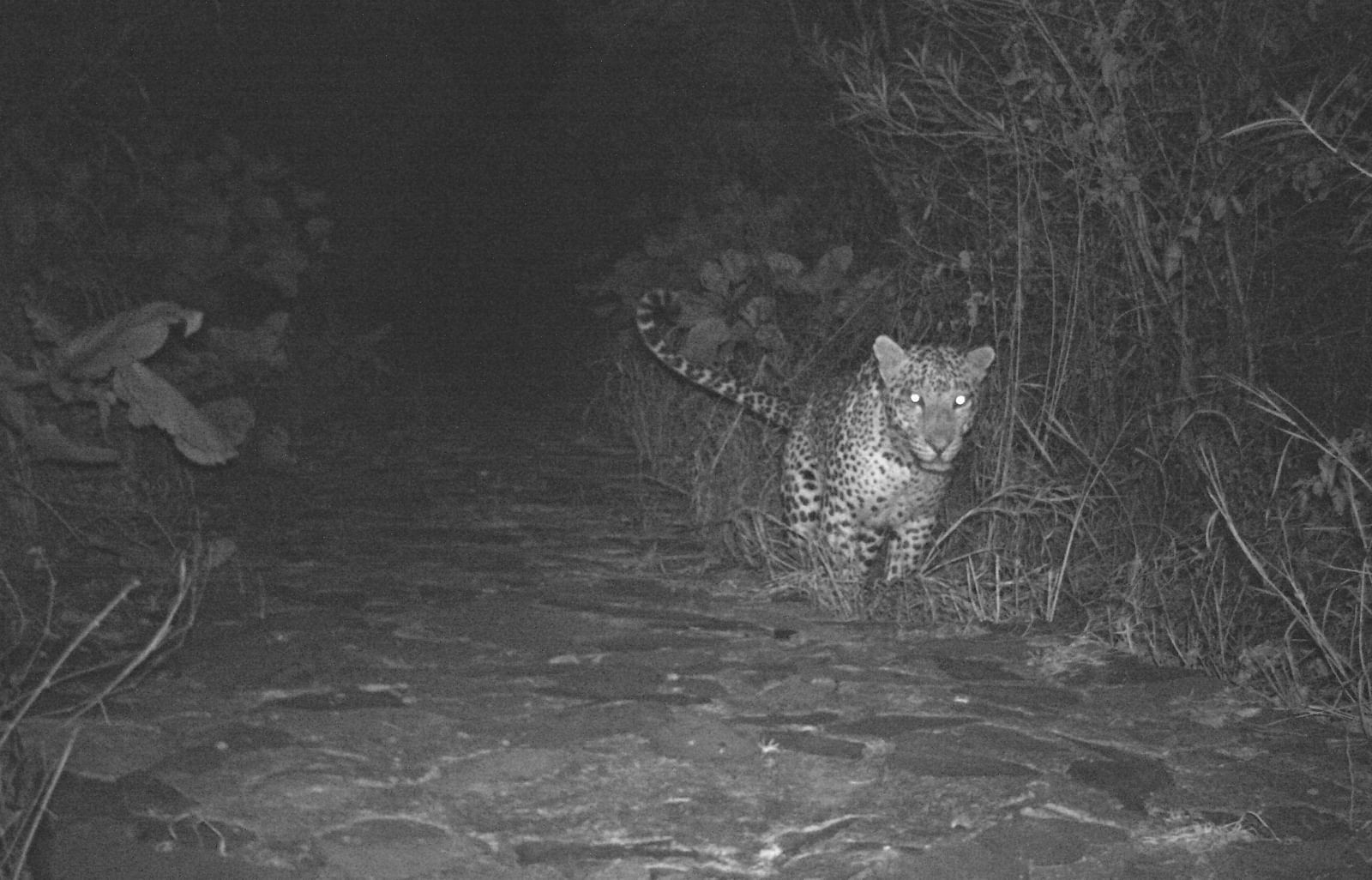
Camera Trap
Camera traps are used to record notable animal behaviour changes over a decade. Learn how we use them at Utsav Camp Sariska to monitor the wildlife surrounding us.
Read More

Hide and Seek with Hyena
Away from the labs of The Maharaja Sayajirao University of Baroda, into the wilderness of boulders, this was the first time I came out of my comfort zone and got an opportunity to work at Utsav Camp Sariska as an intern.
Read More
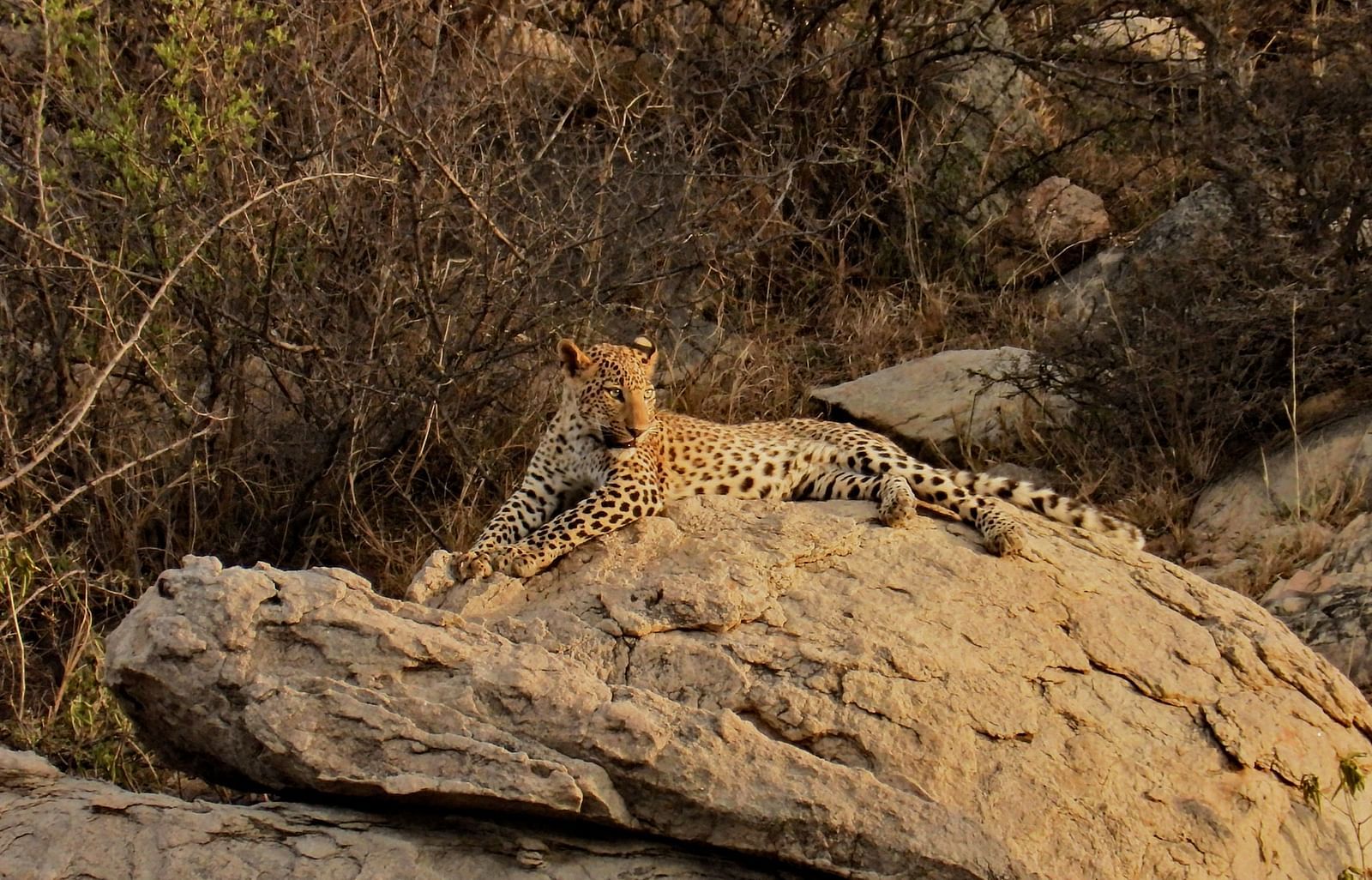
In the Wild Heart of Sariska: A Journey into the Unknown
An intern’s first encounter with the wild at Sariska—from leopard sightings to silent sunsets, a journey into nature, guided by expert naturalists and deep curiosity.
Read More
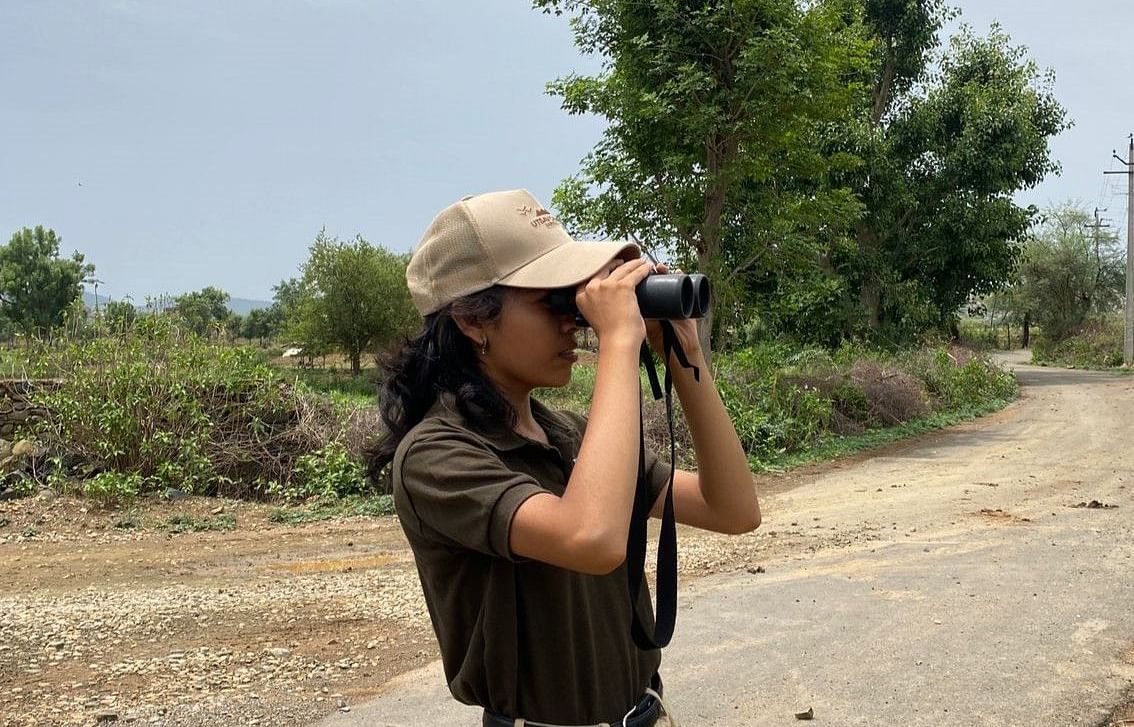
The Glowing Eyes
A thrilling morning in Sariska as glowing eyes in the dark lead to an unforgettable leopard encounter and wild insights.
Read More